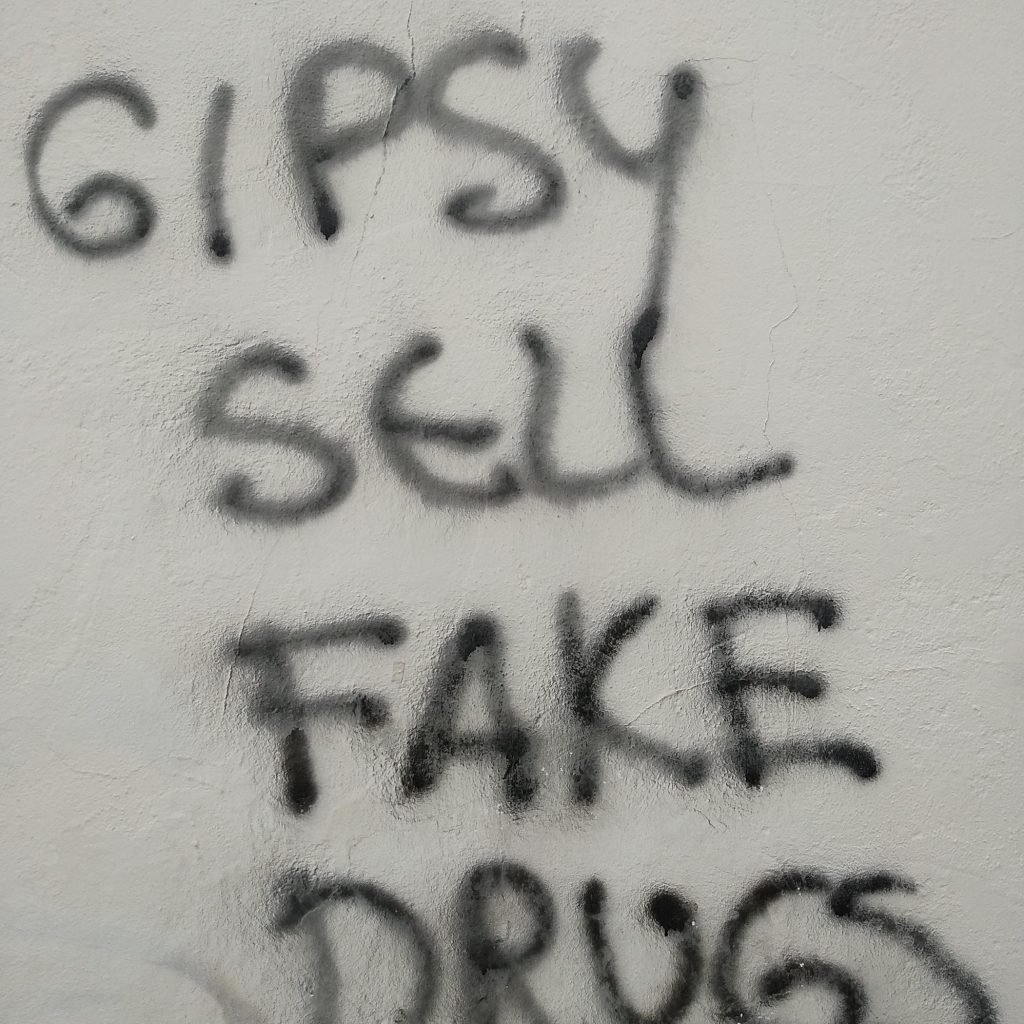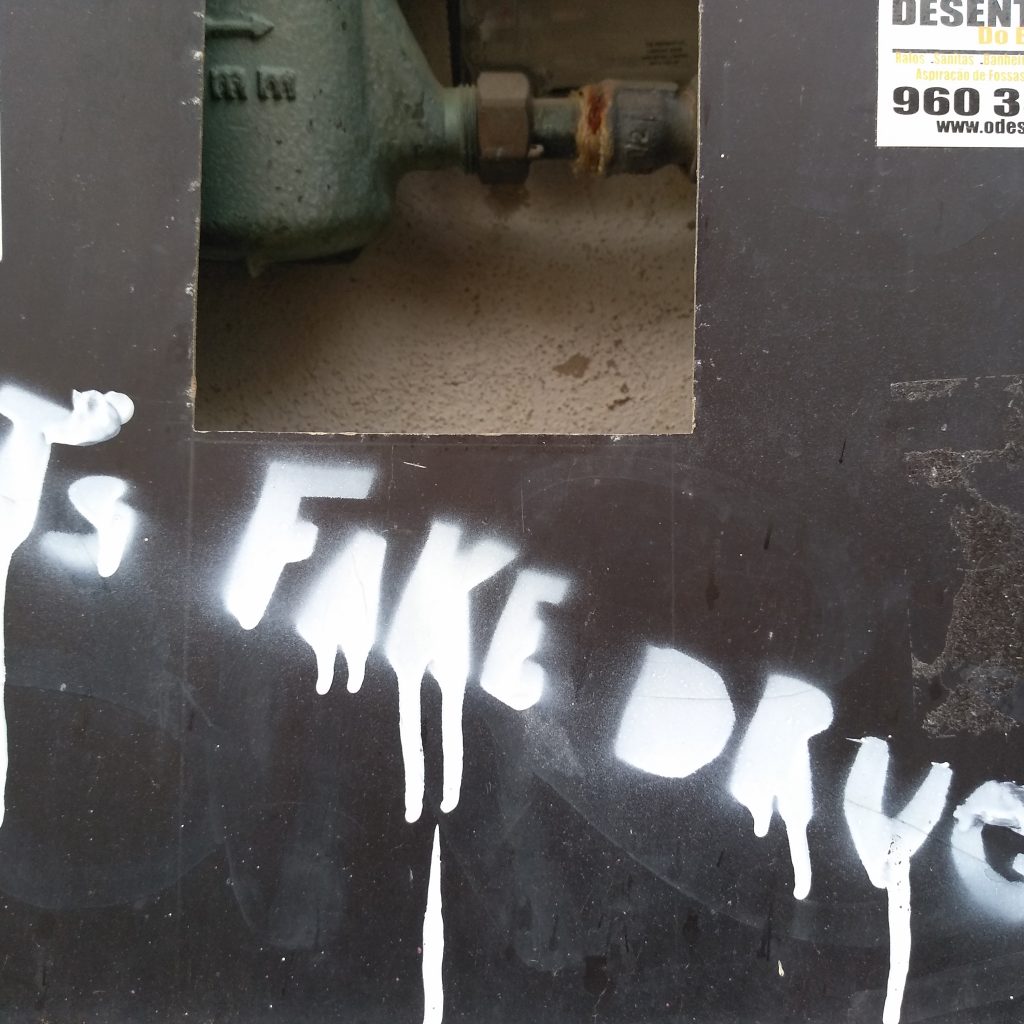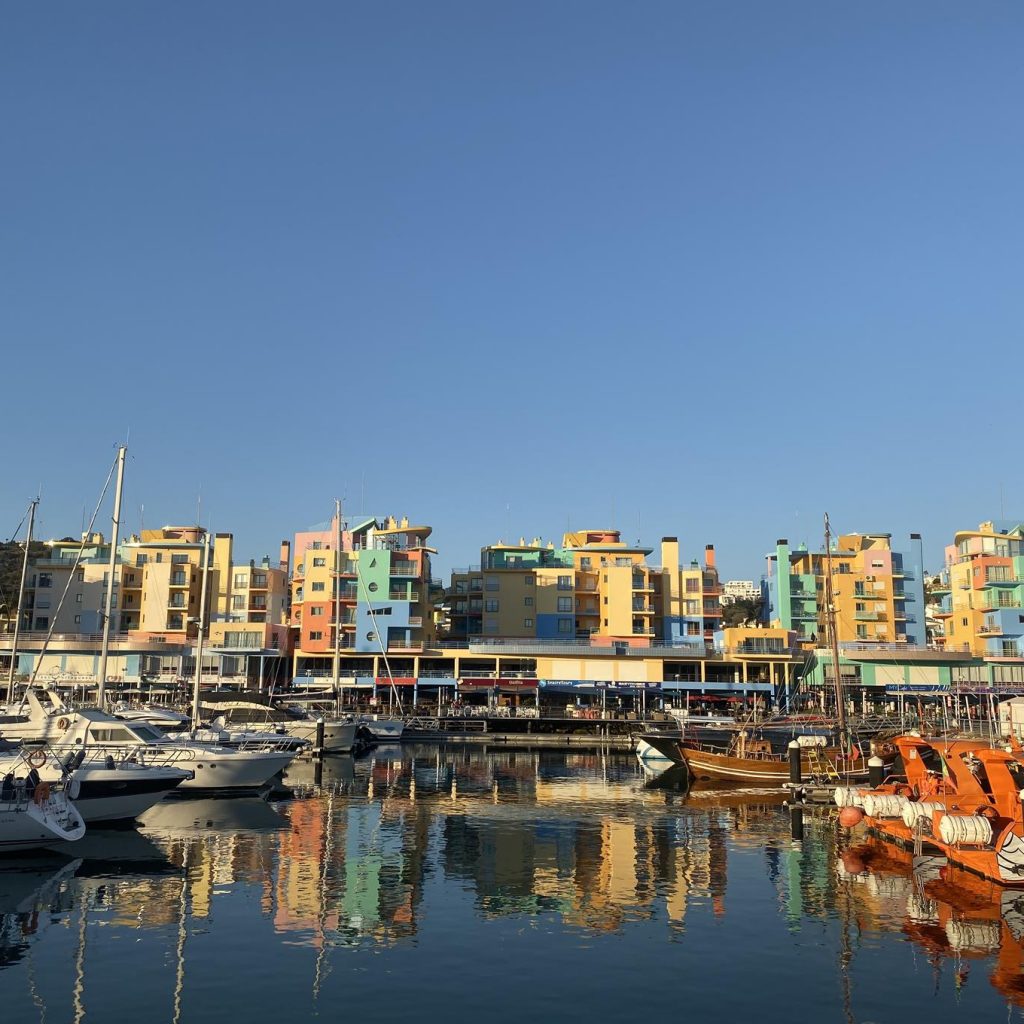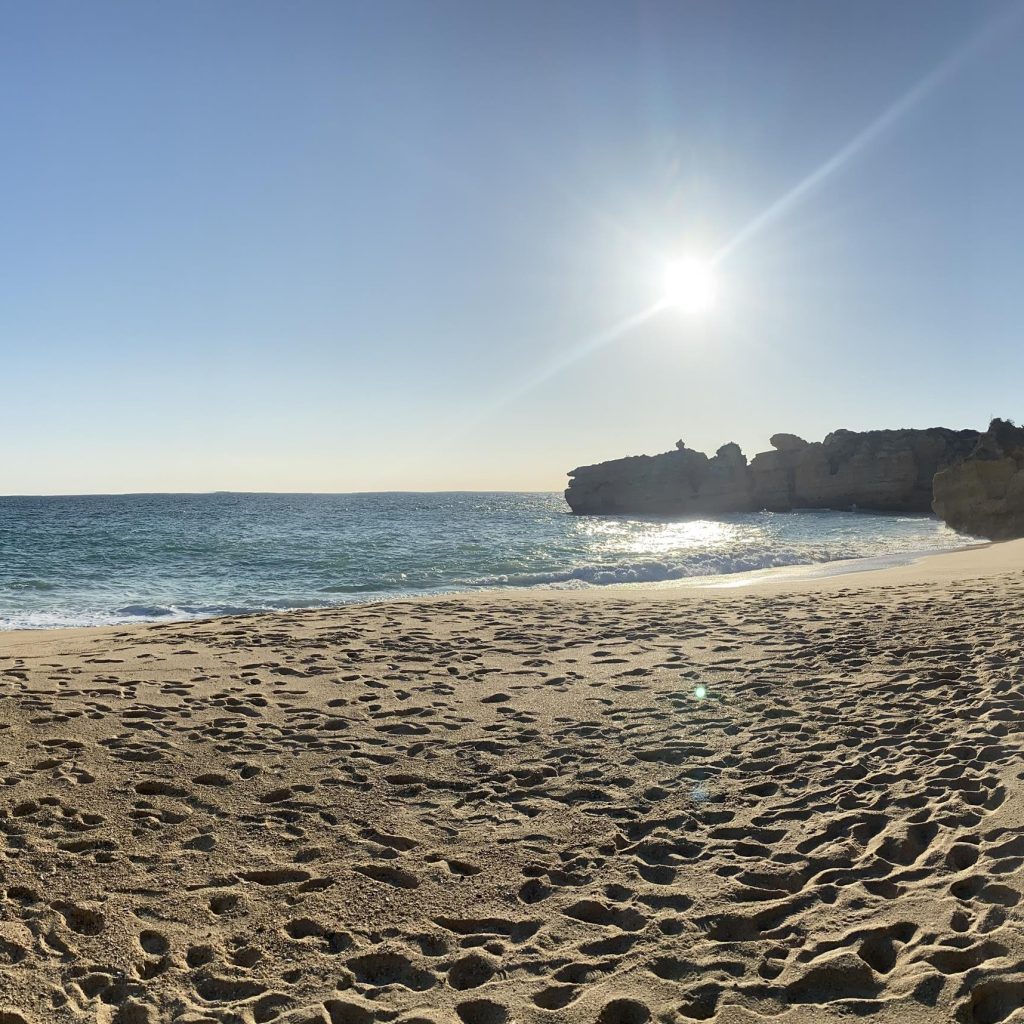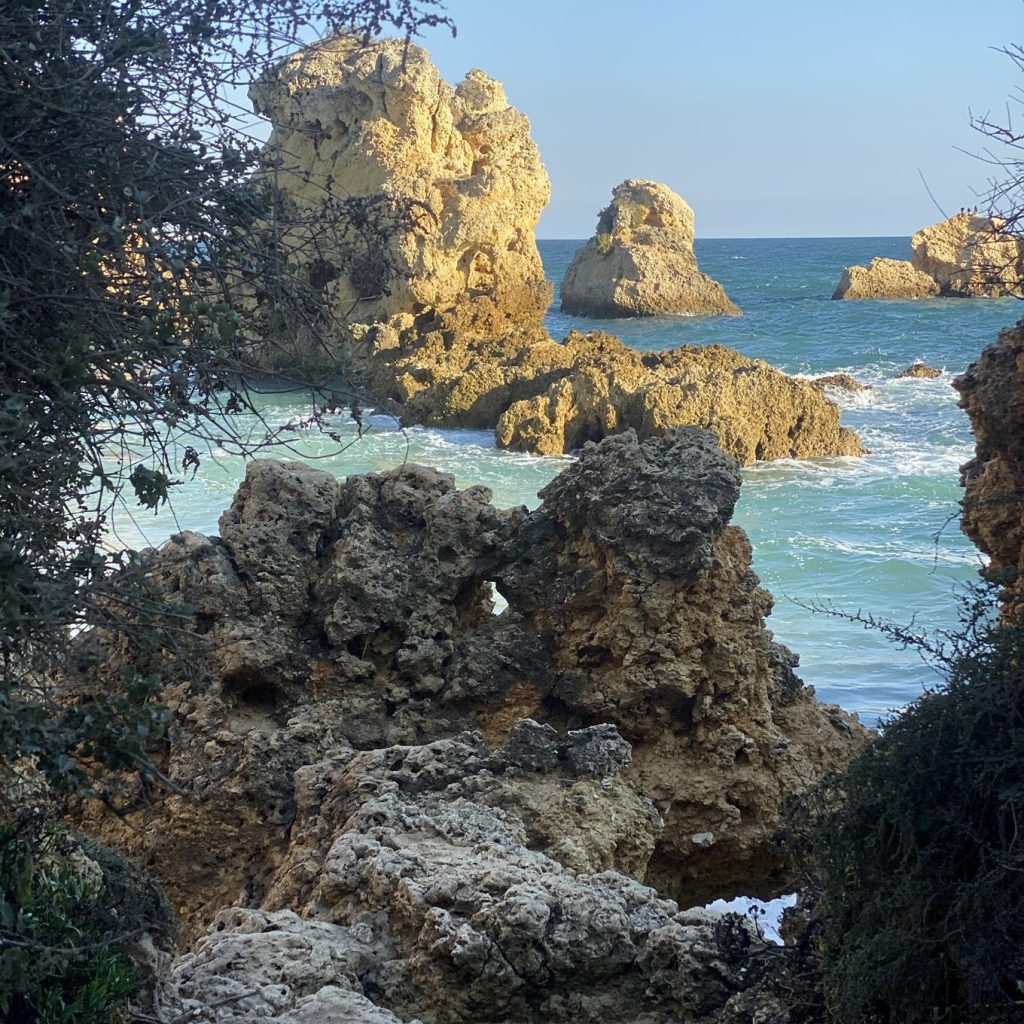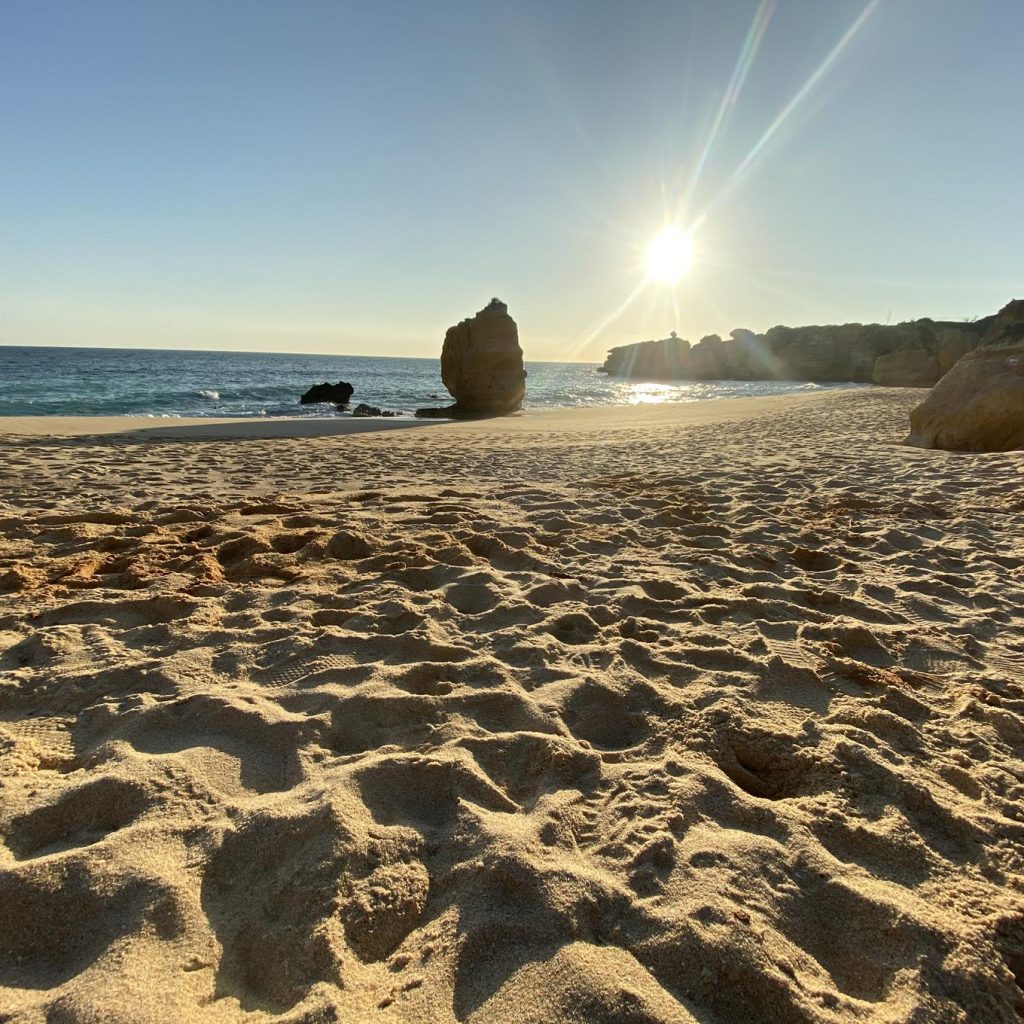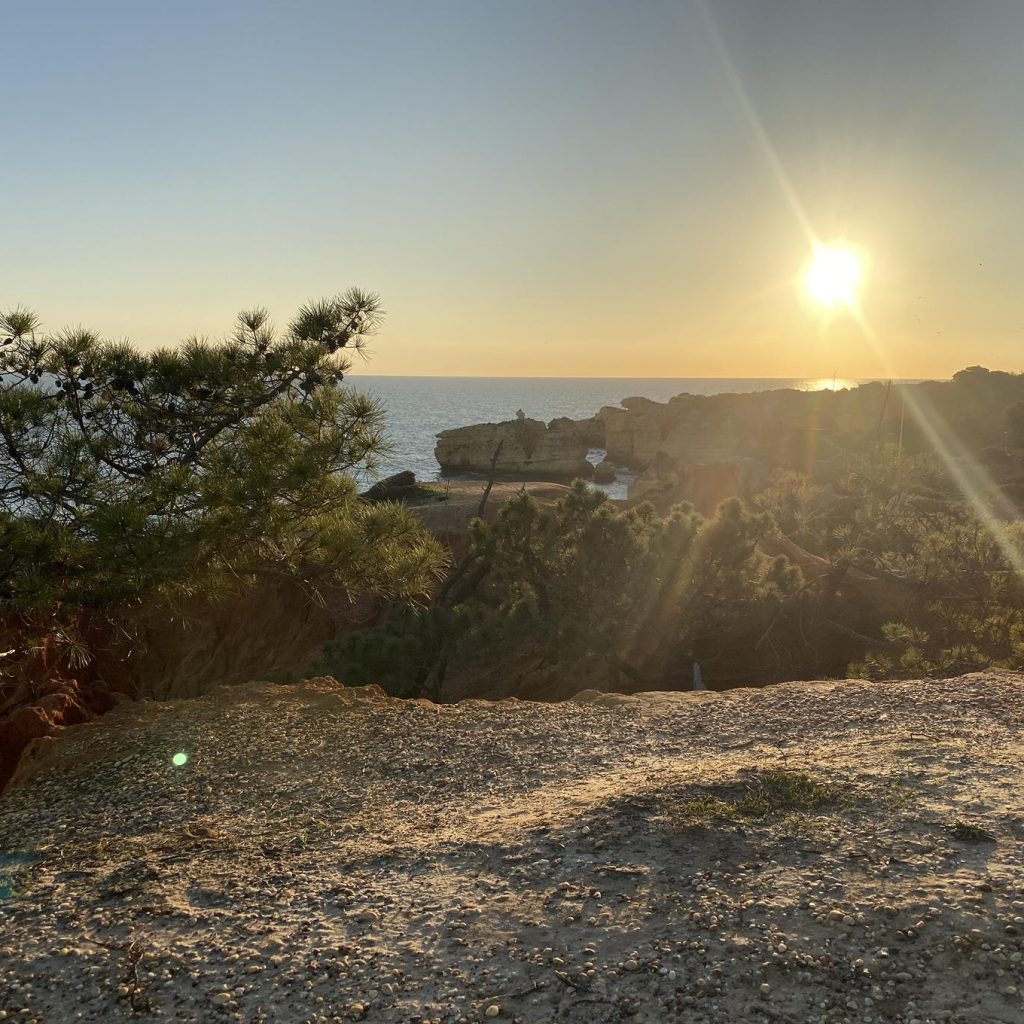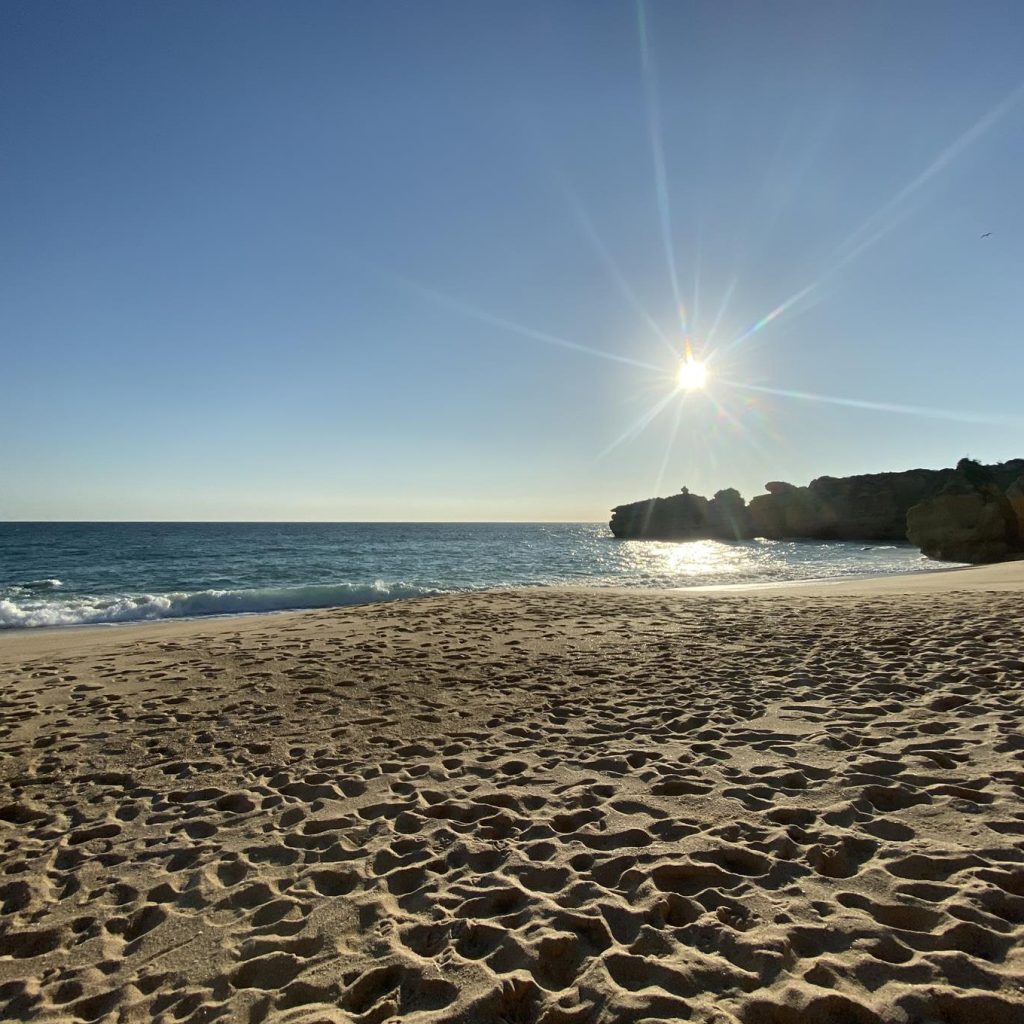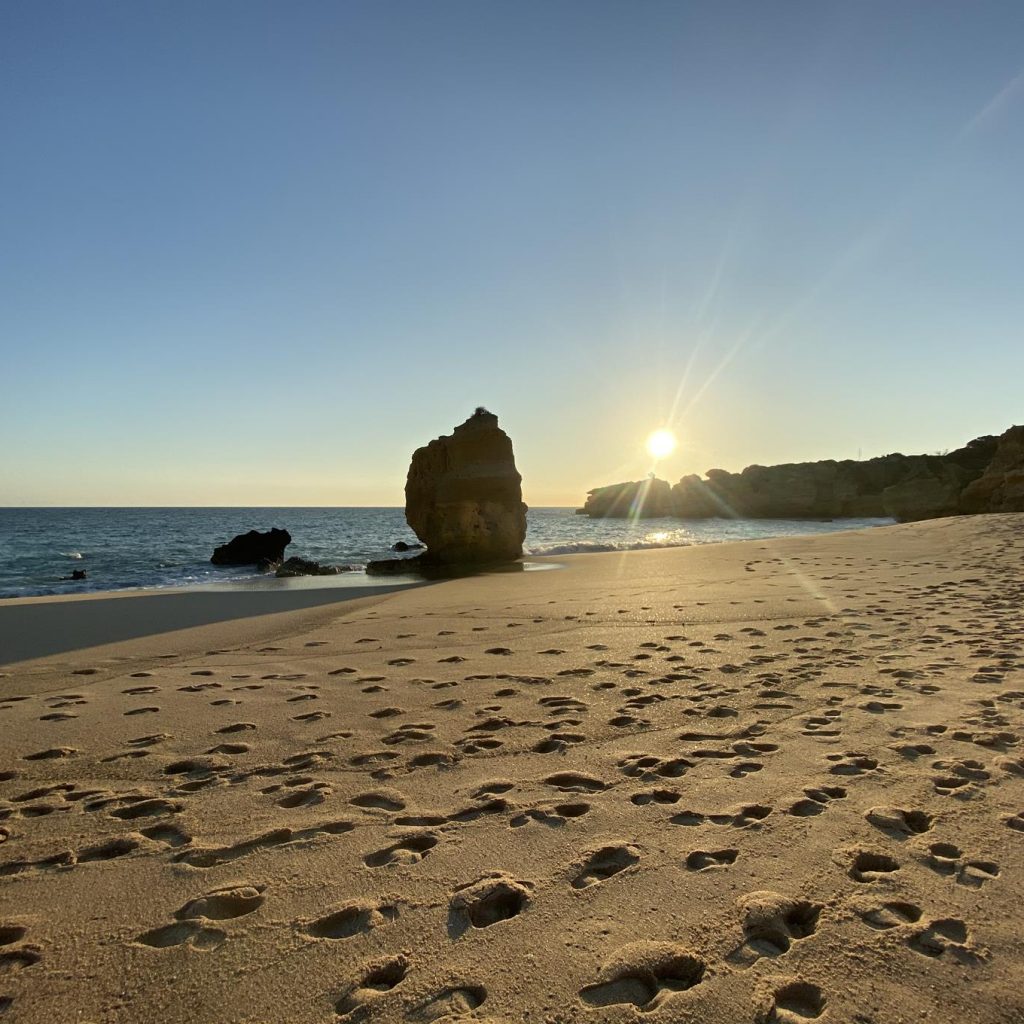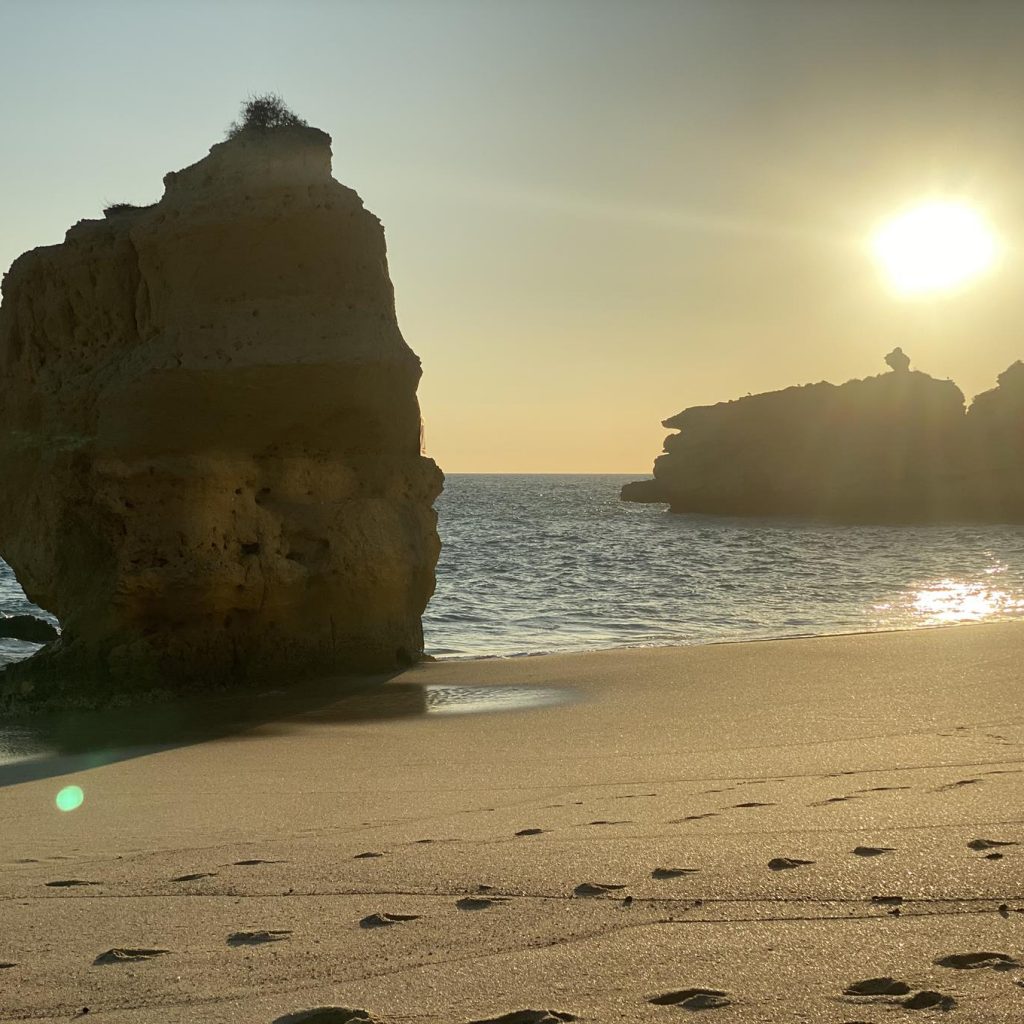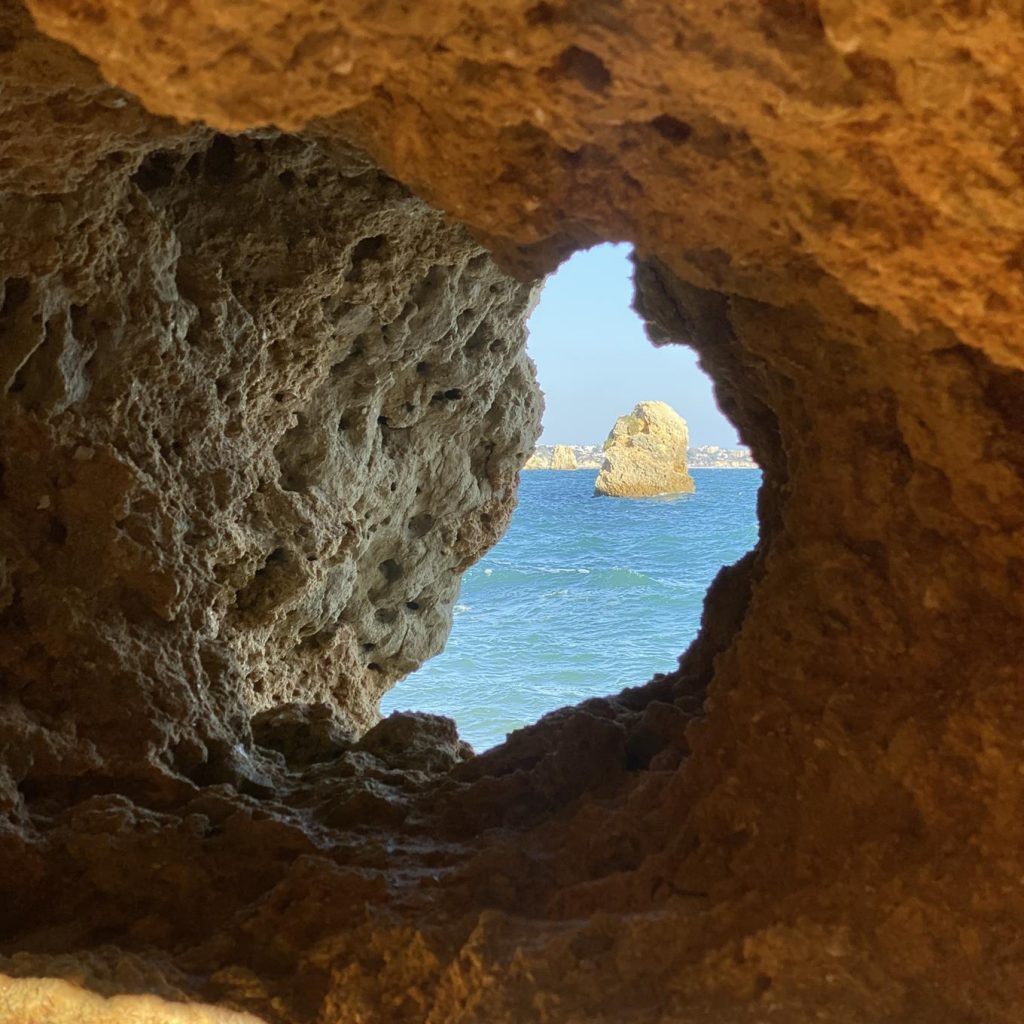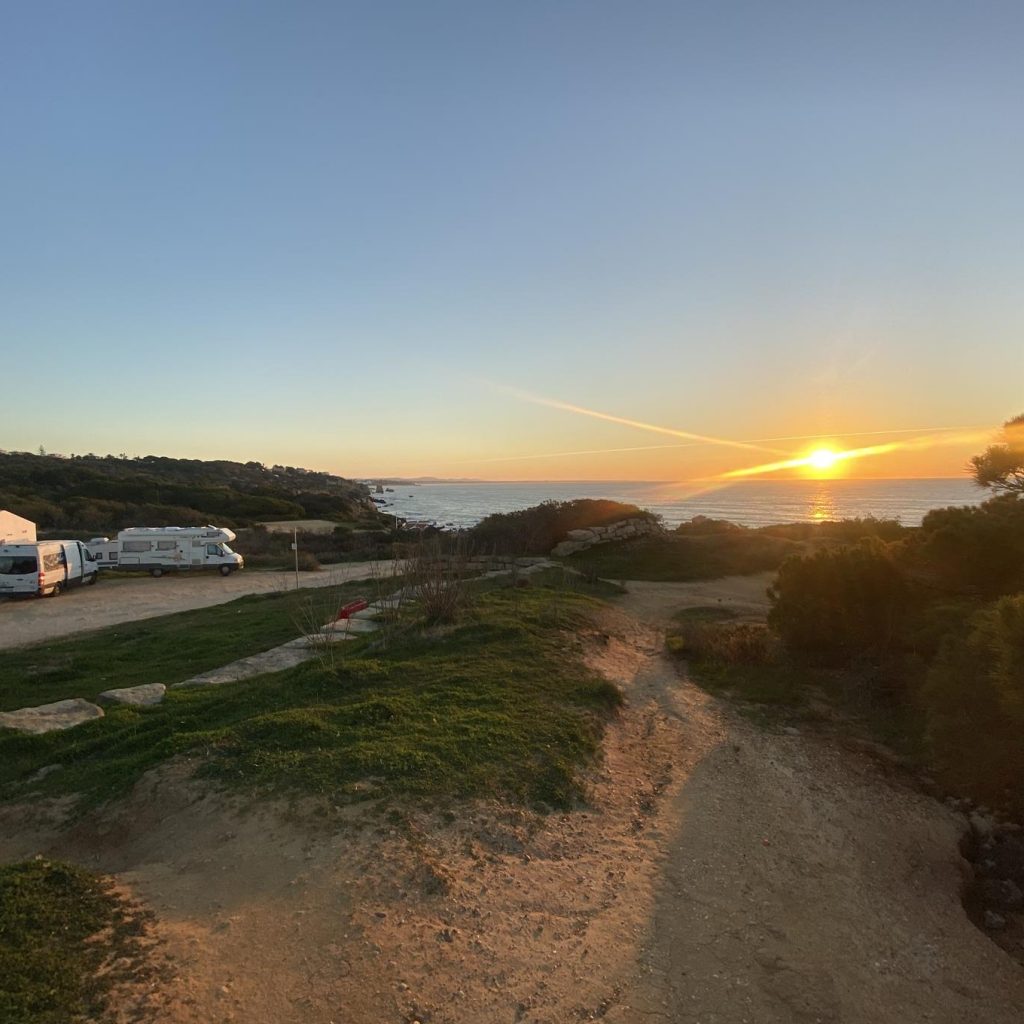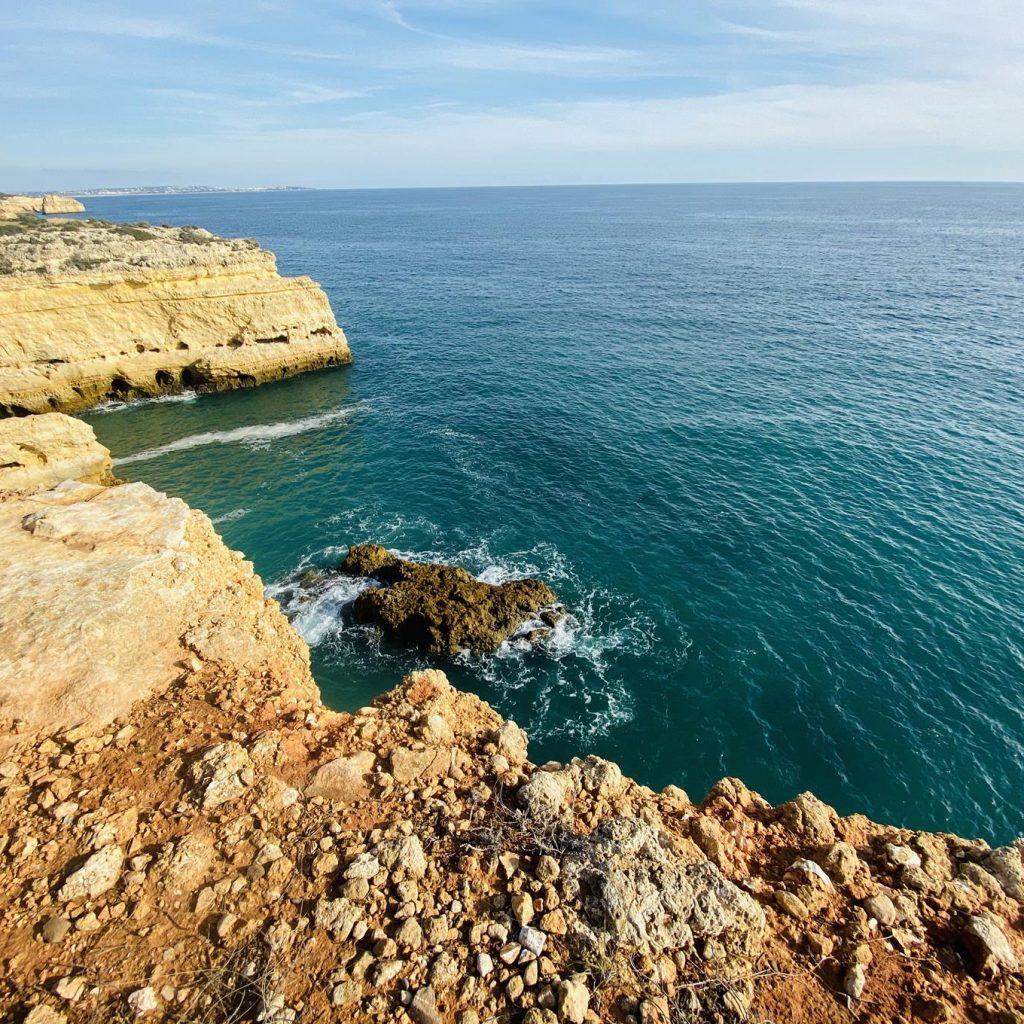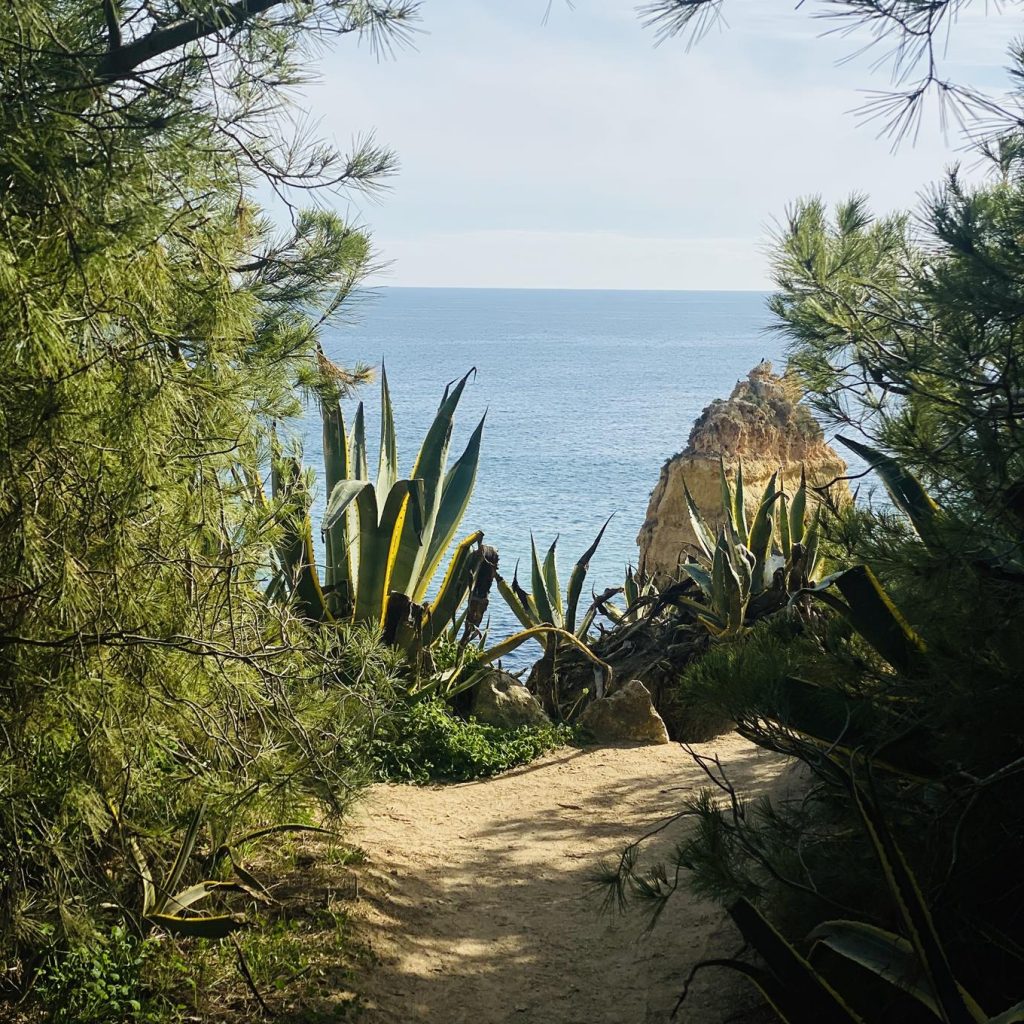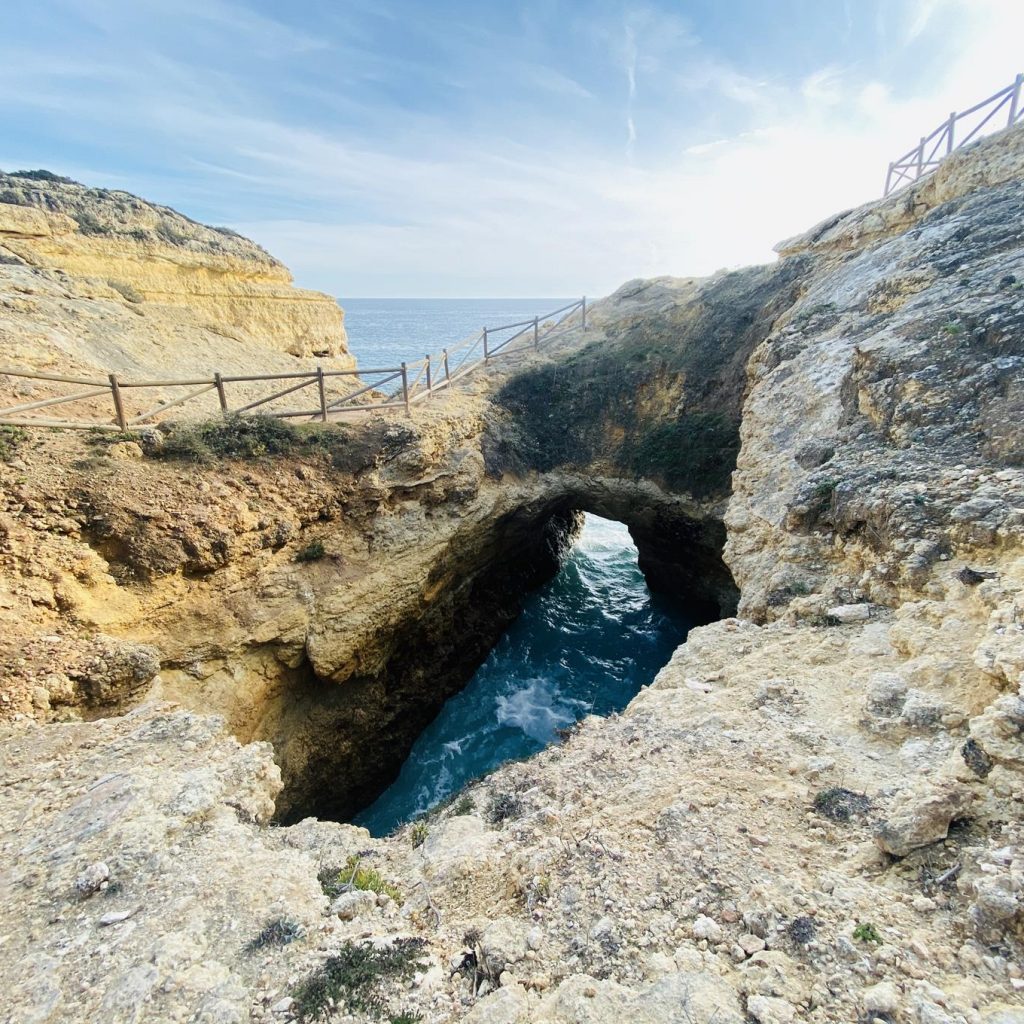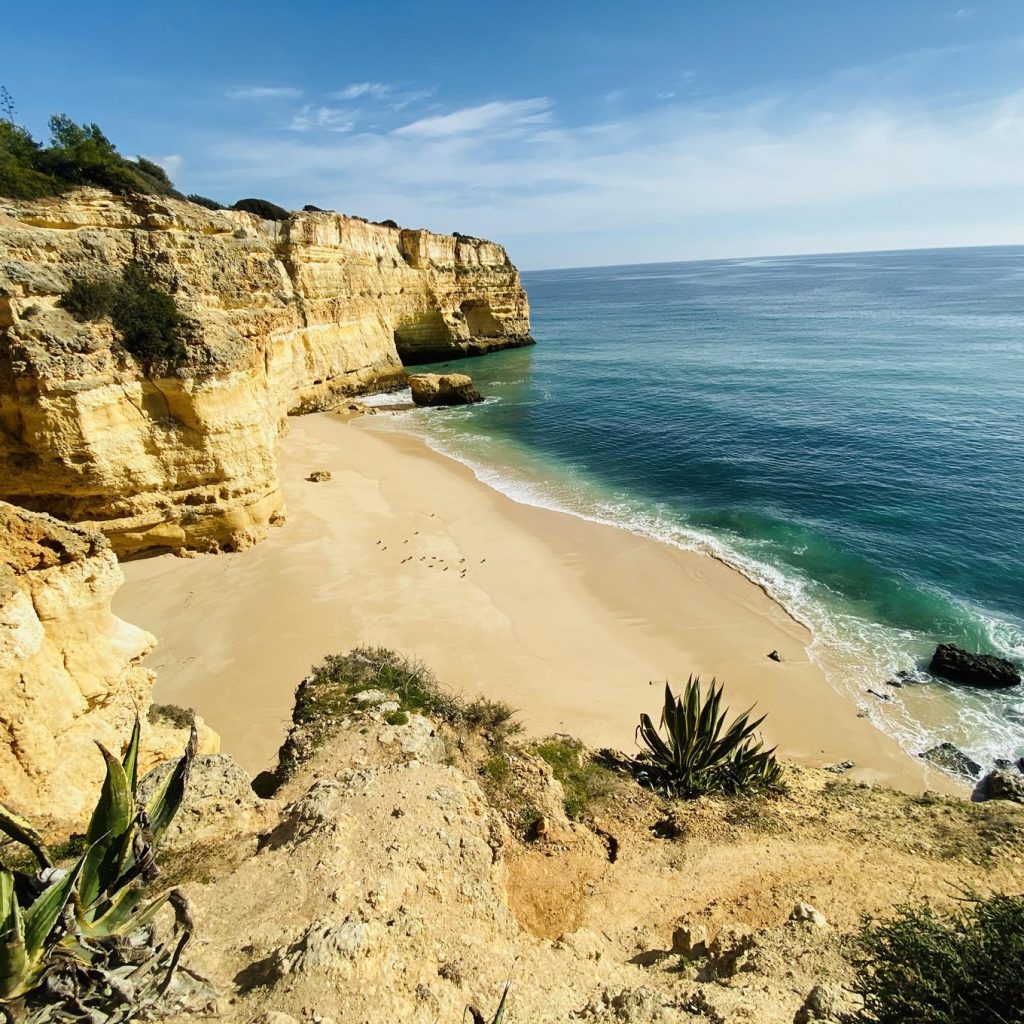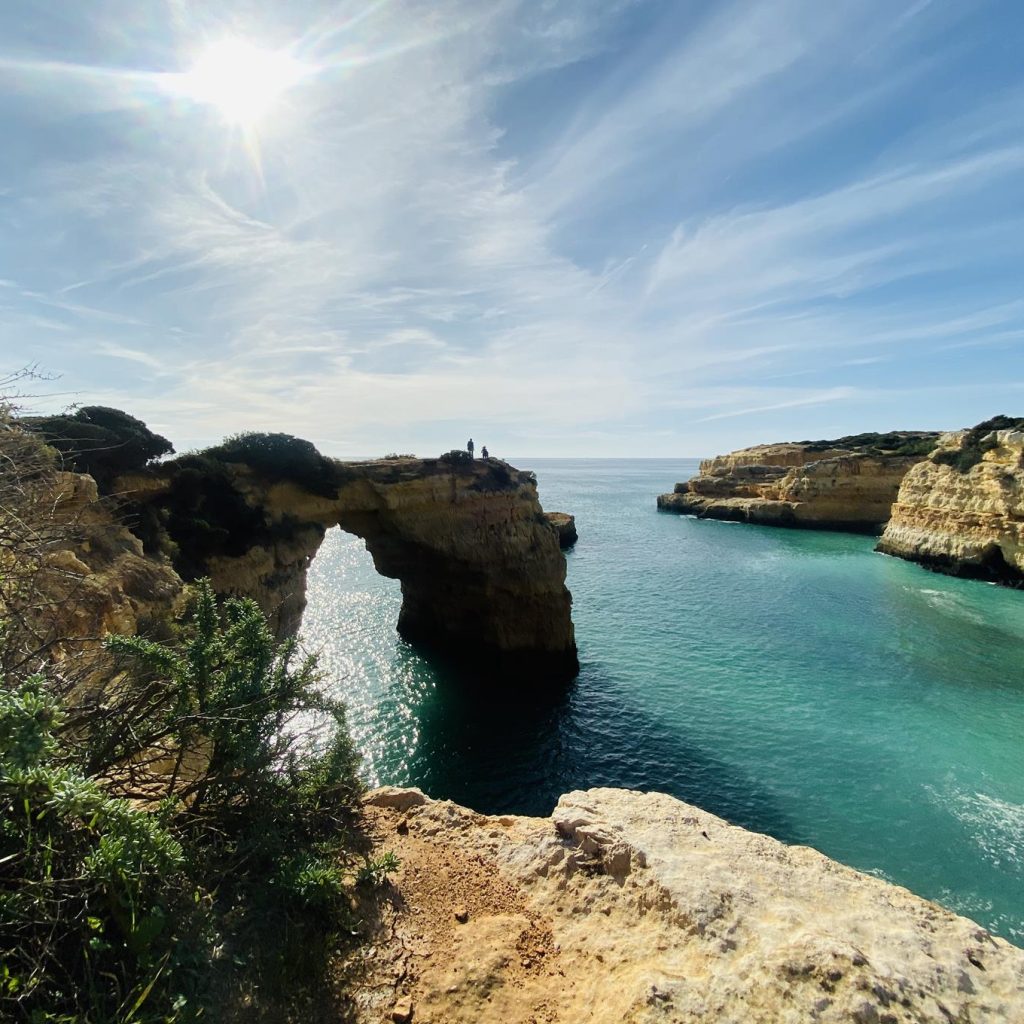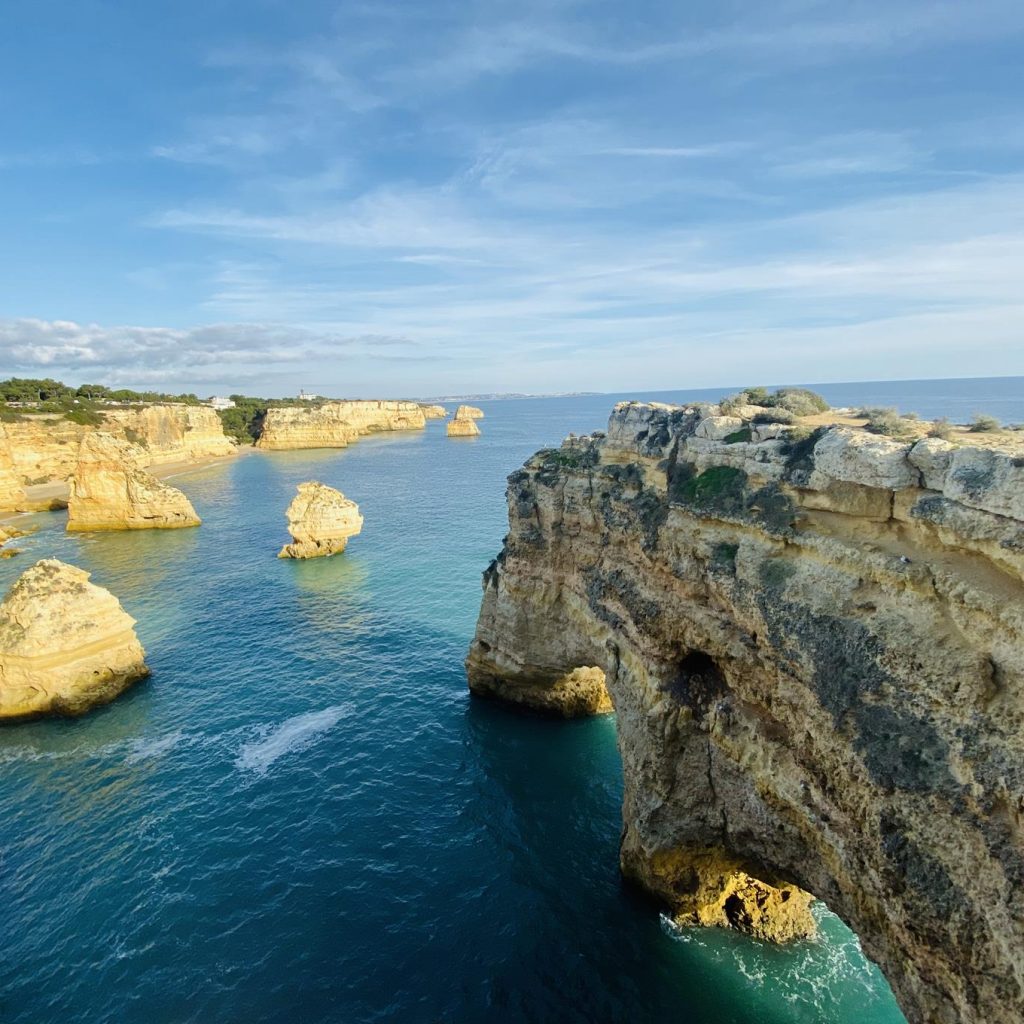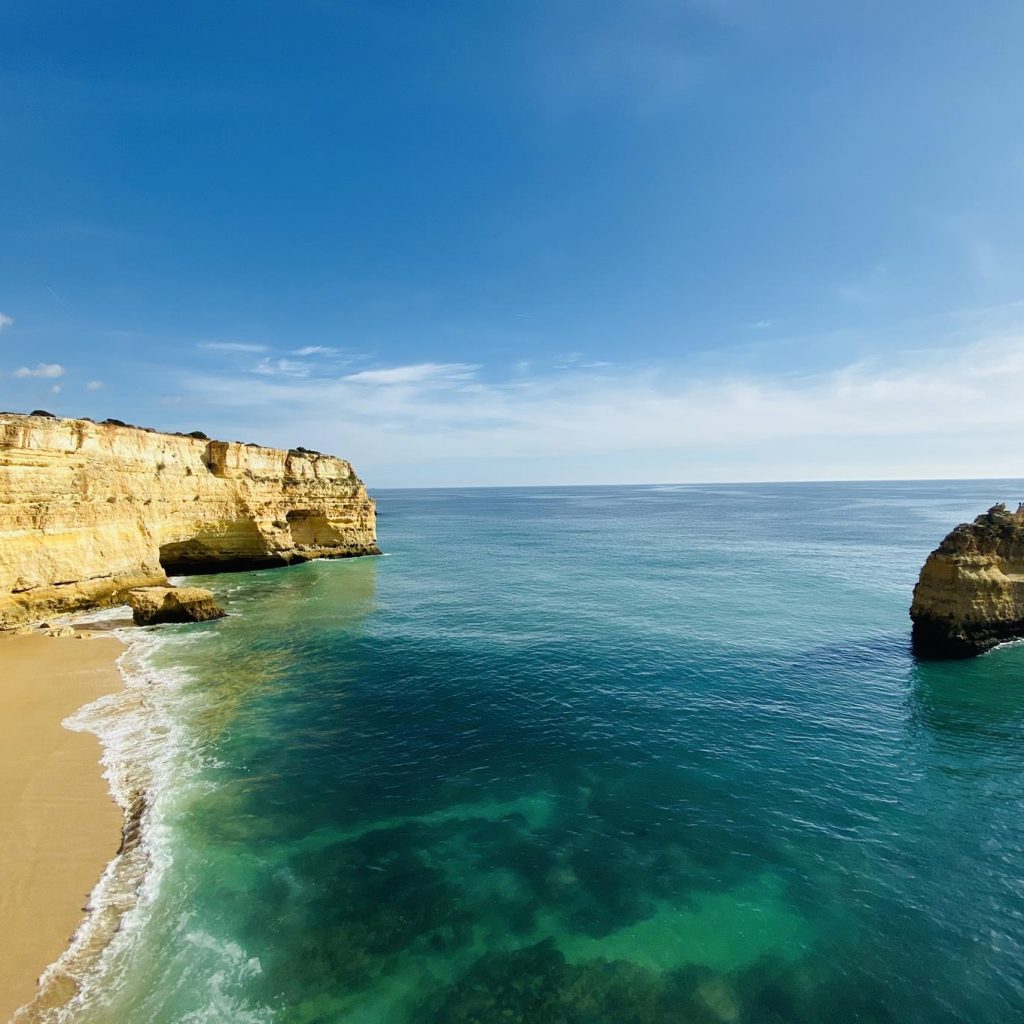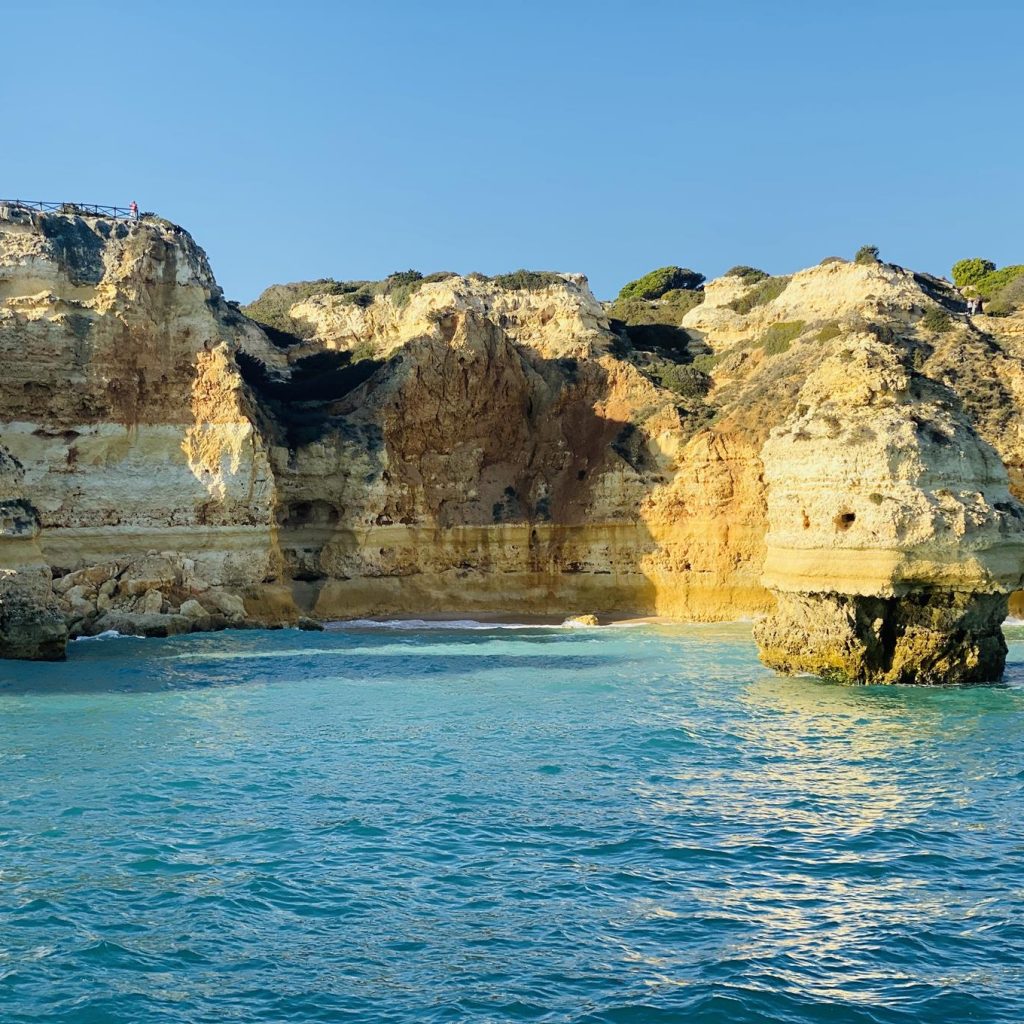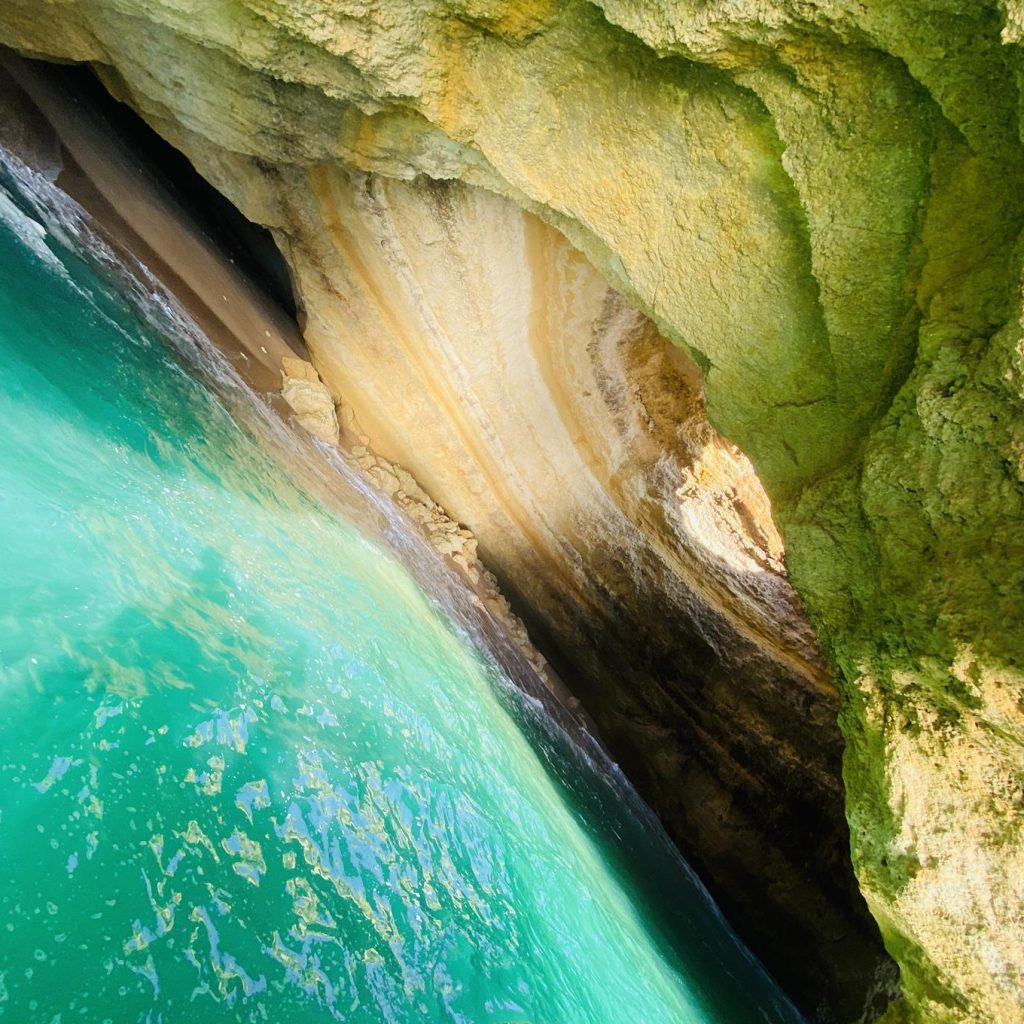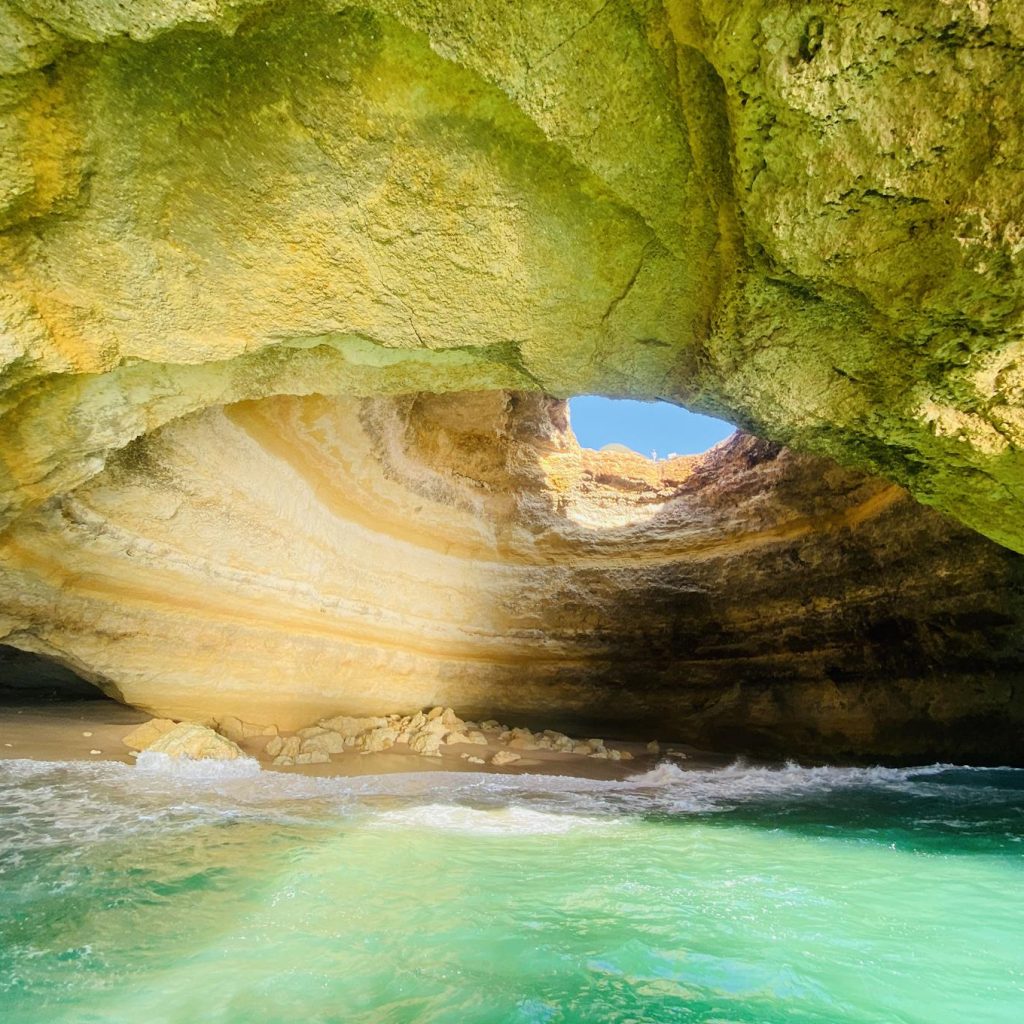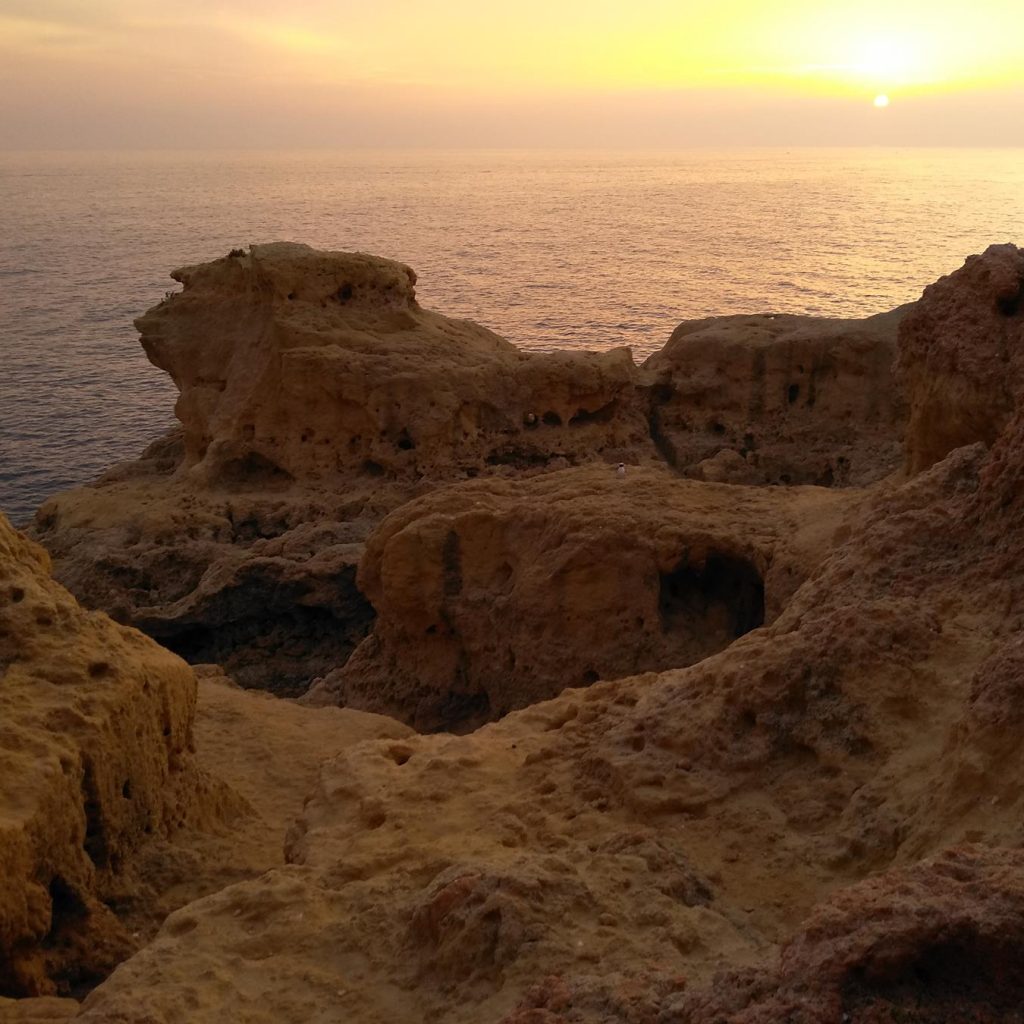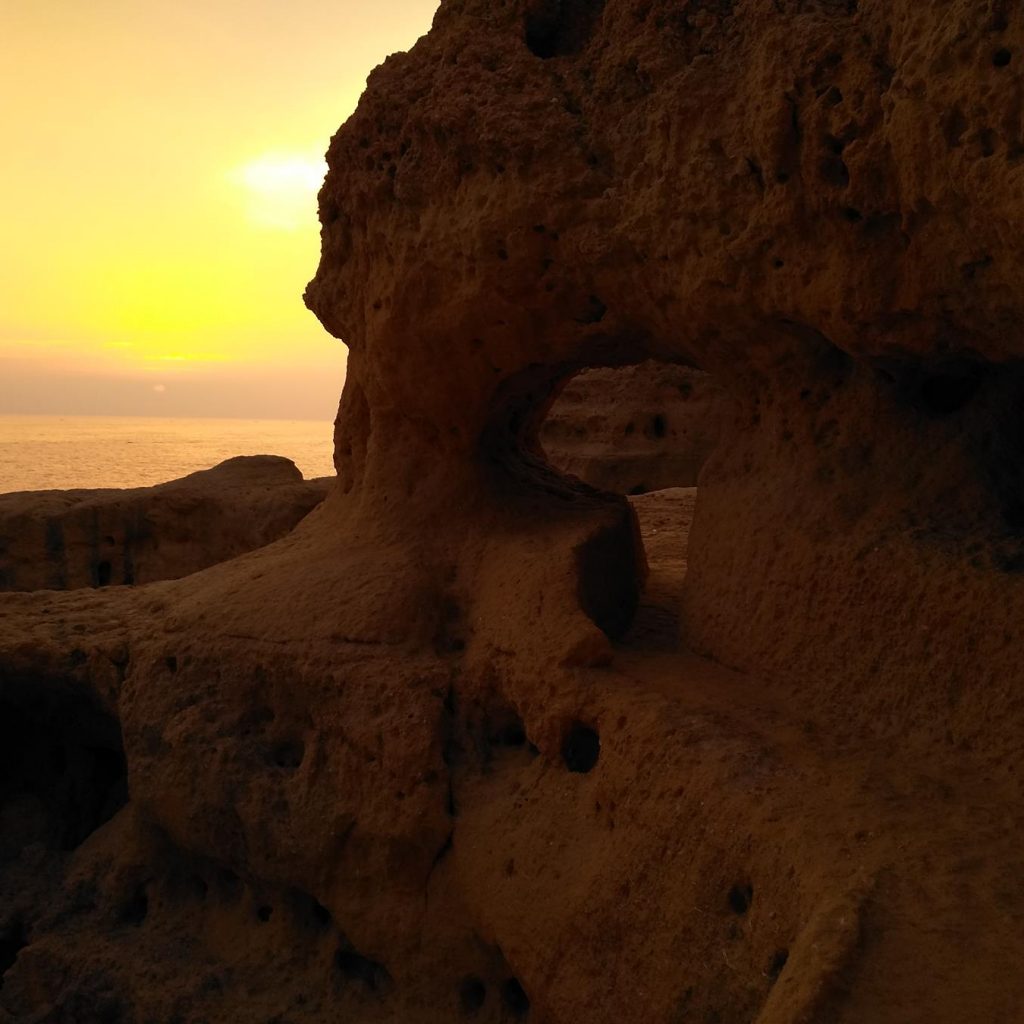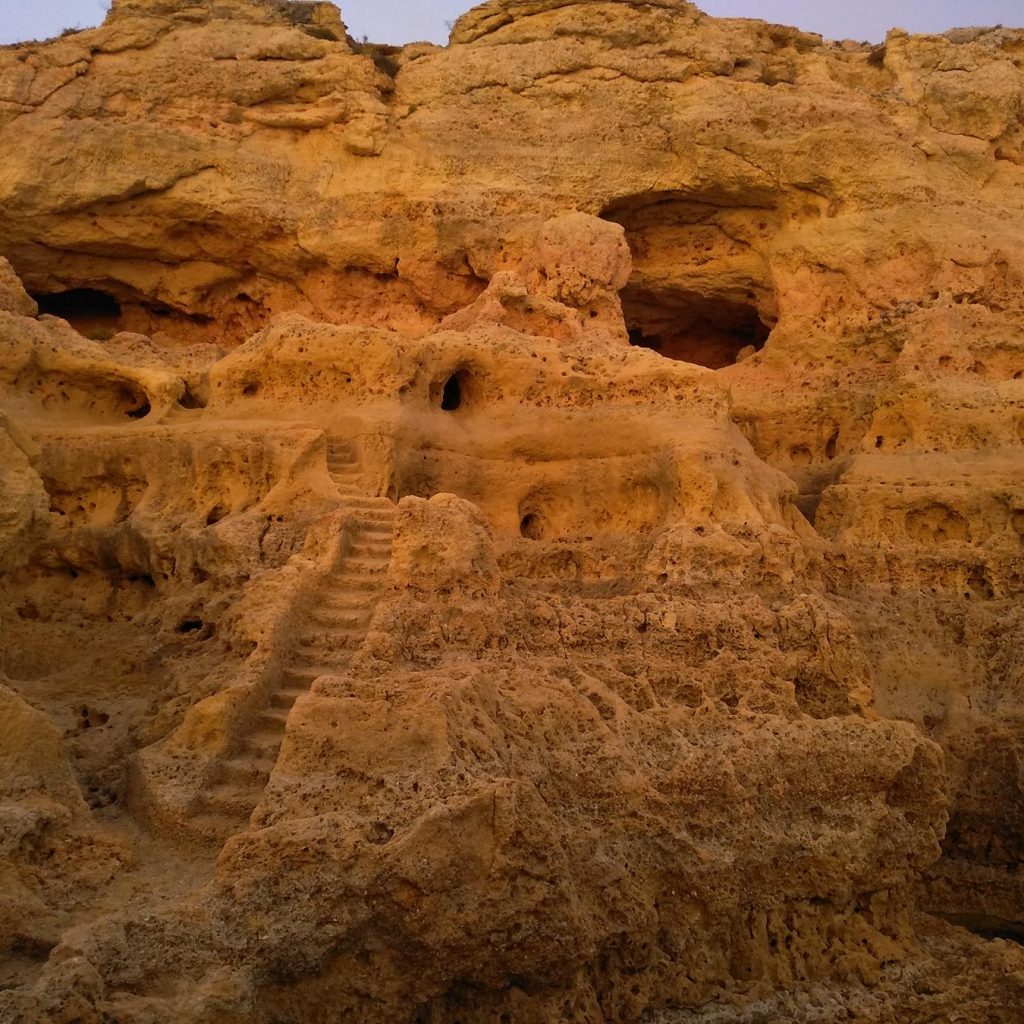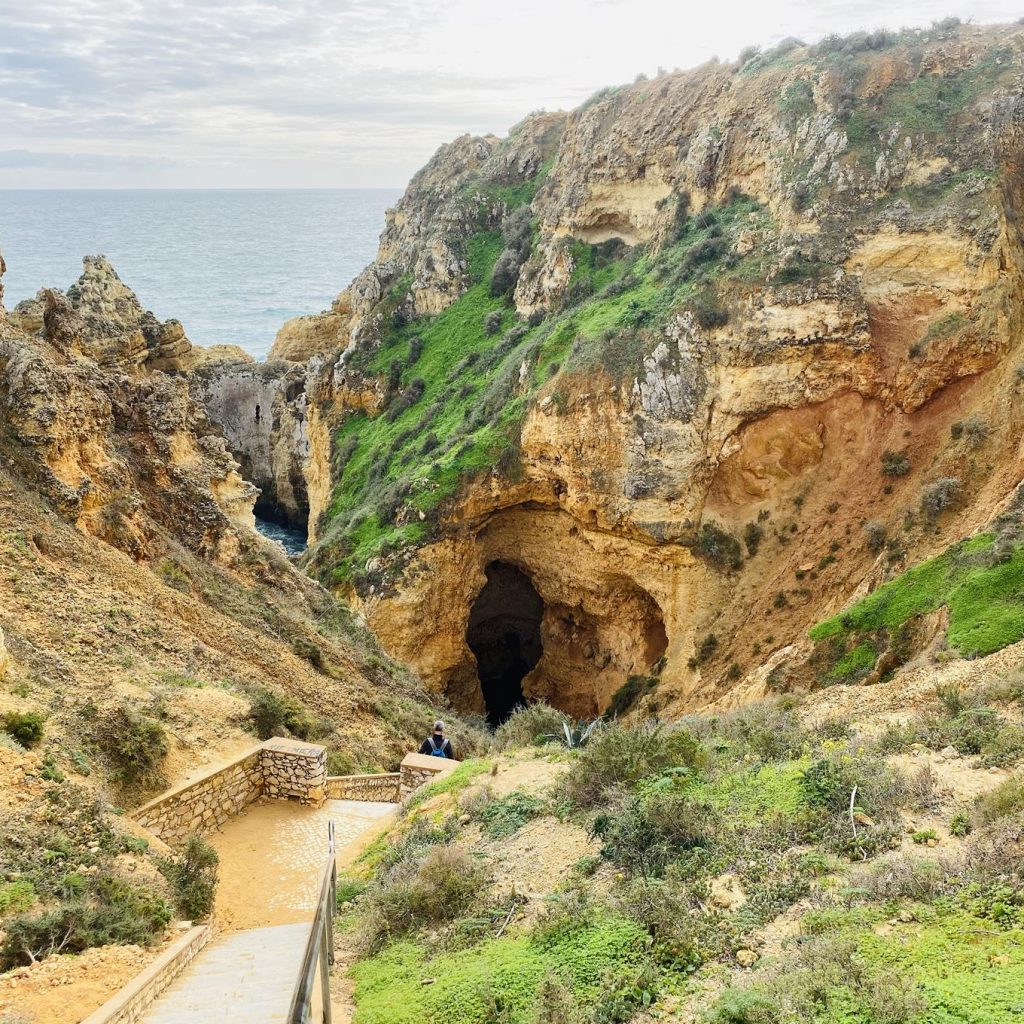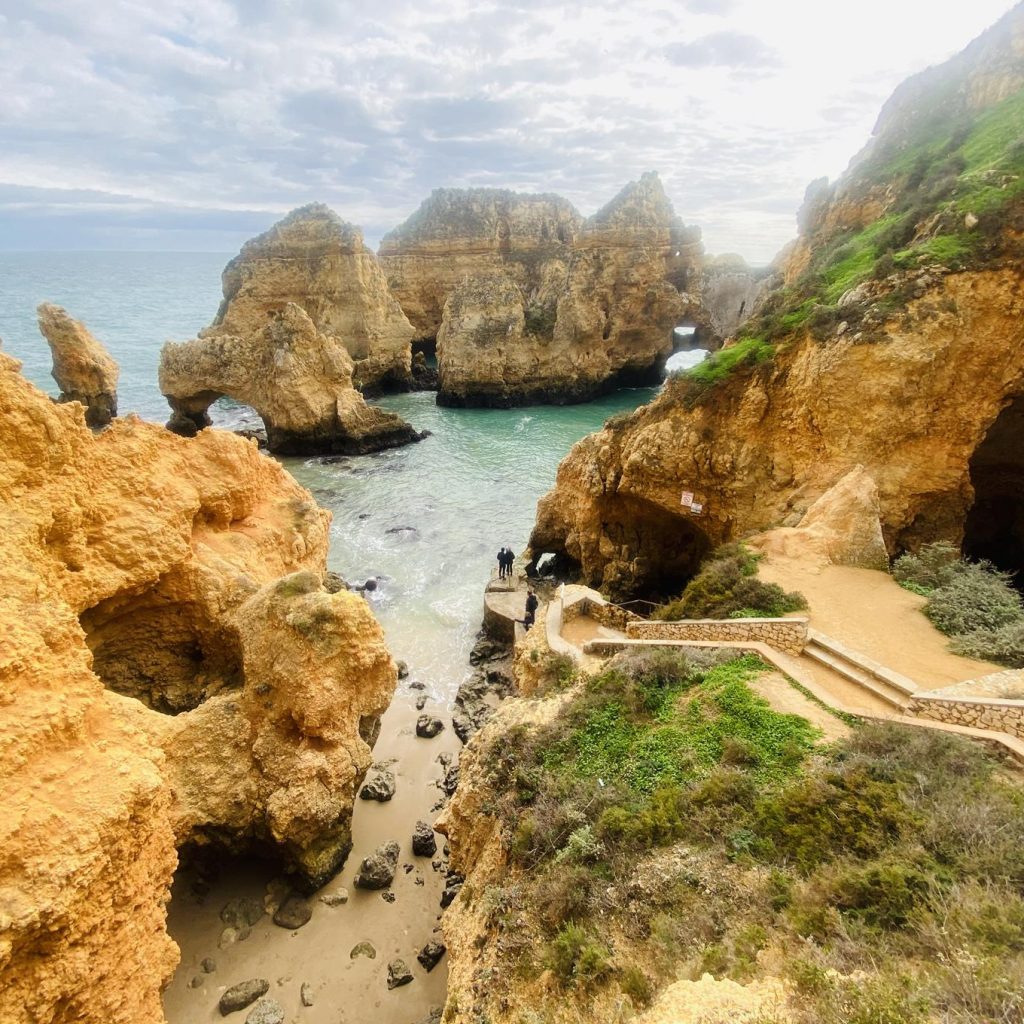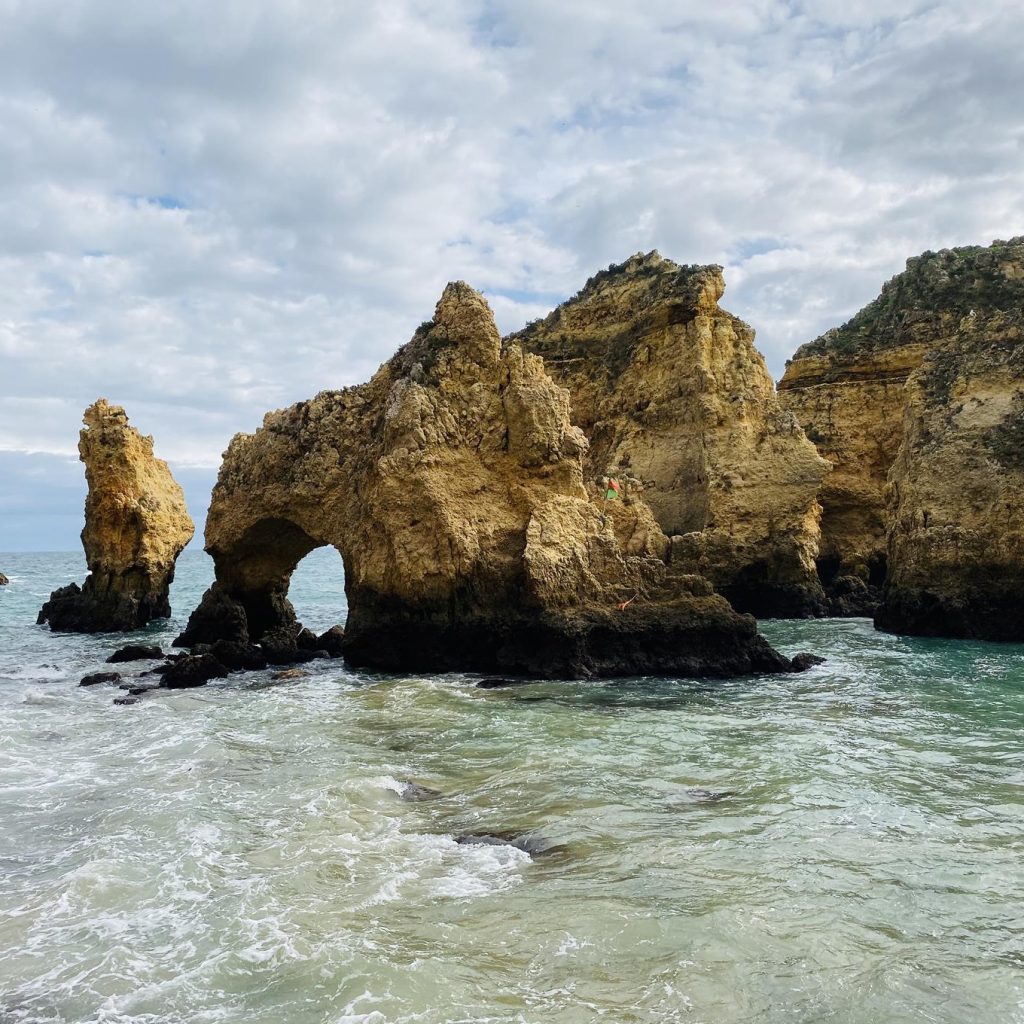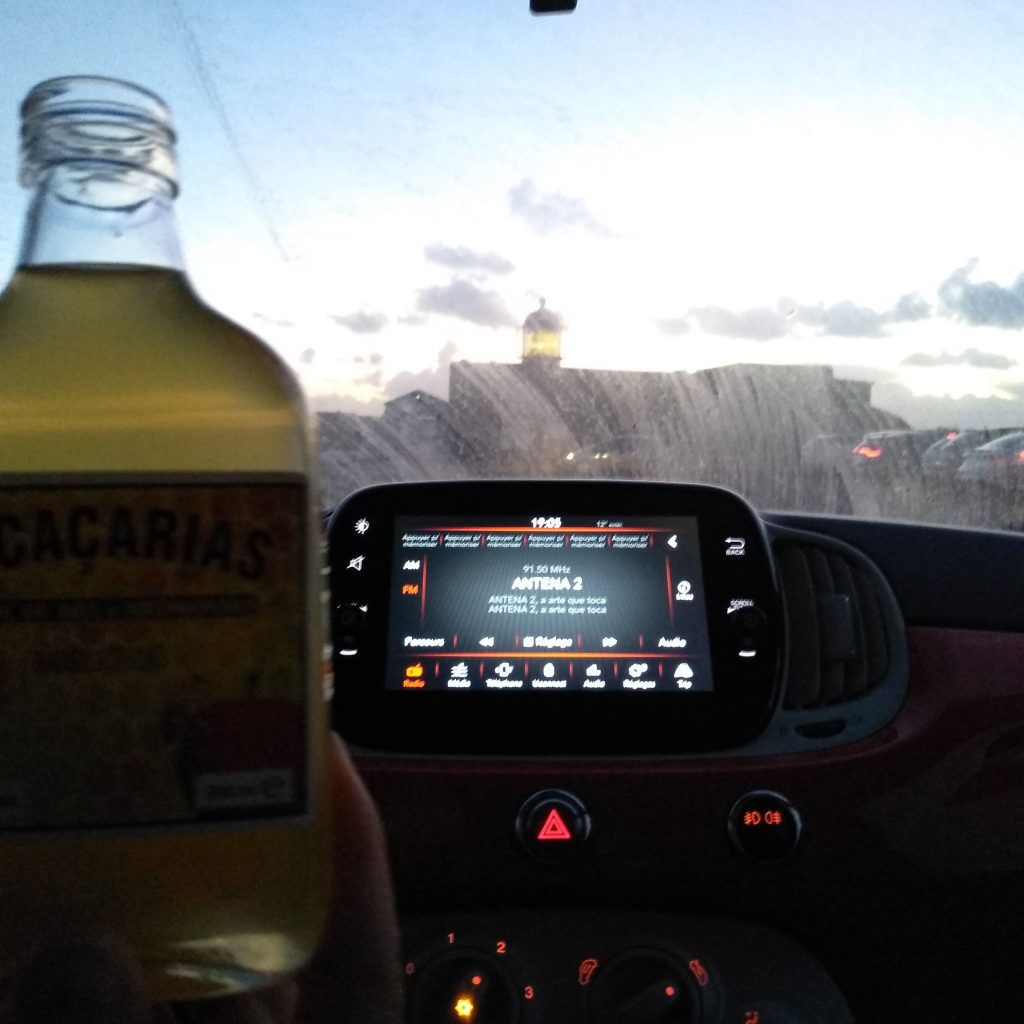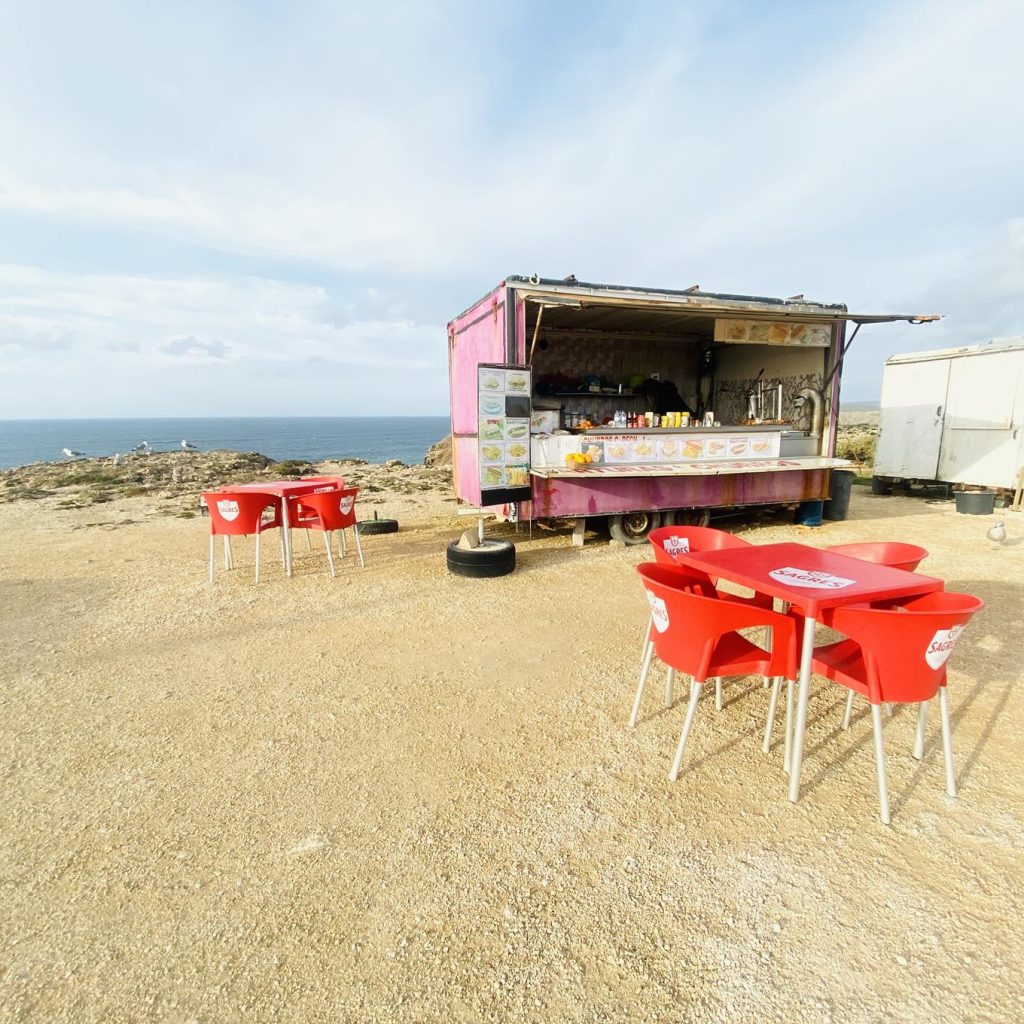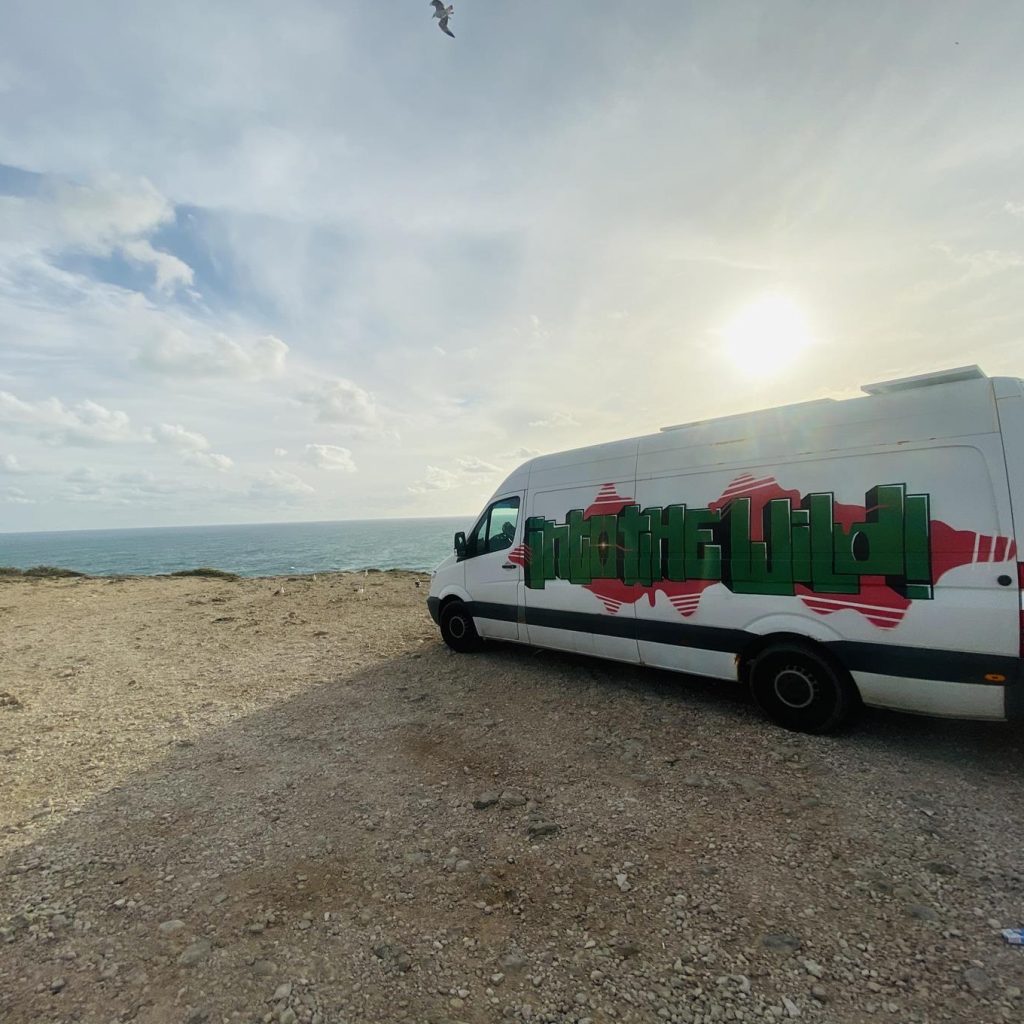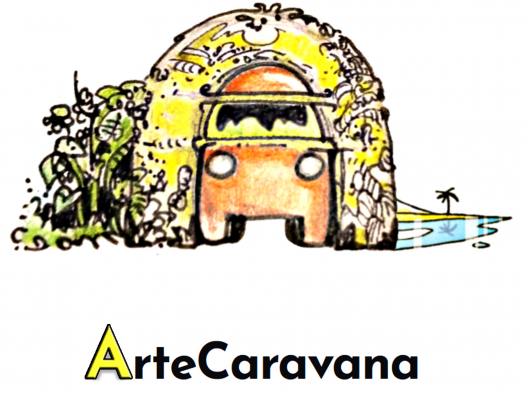
Leather handicraft straight from the workshop on four wheels
Wandering through Iberian lands
Algarve – the land of almonds, piri-piri, beautiful cliffs and strong winds. Last land recovered during Reconquista. Part 2: Places – Barlovento: from Albufeira to Cape St. Vincent
06/04/2020 3:11 PM
Today we are inviting you to read the next episode of our subjective guide to Algarve. This time we are going to continue our virtual journey starting in Albufeira all the way to Cape St. Vincent. This way we will have the chance to show you our favorite places. Hopefully this article will answer some questions that I am often asked when guiding trips (I’m a tourist guide – my specialties are Portugal and Spanish Andalusia) and dispel some of your doubts.
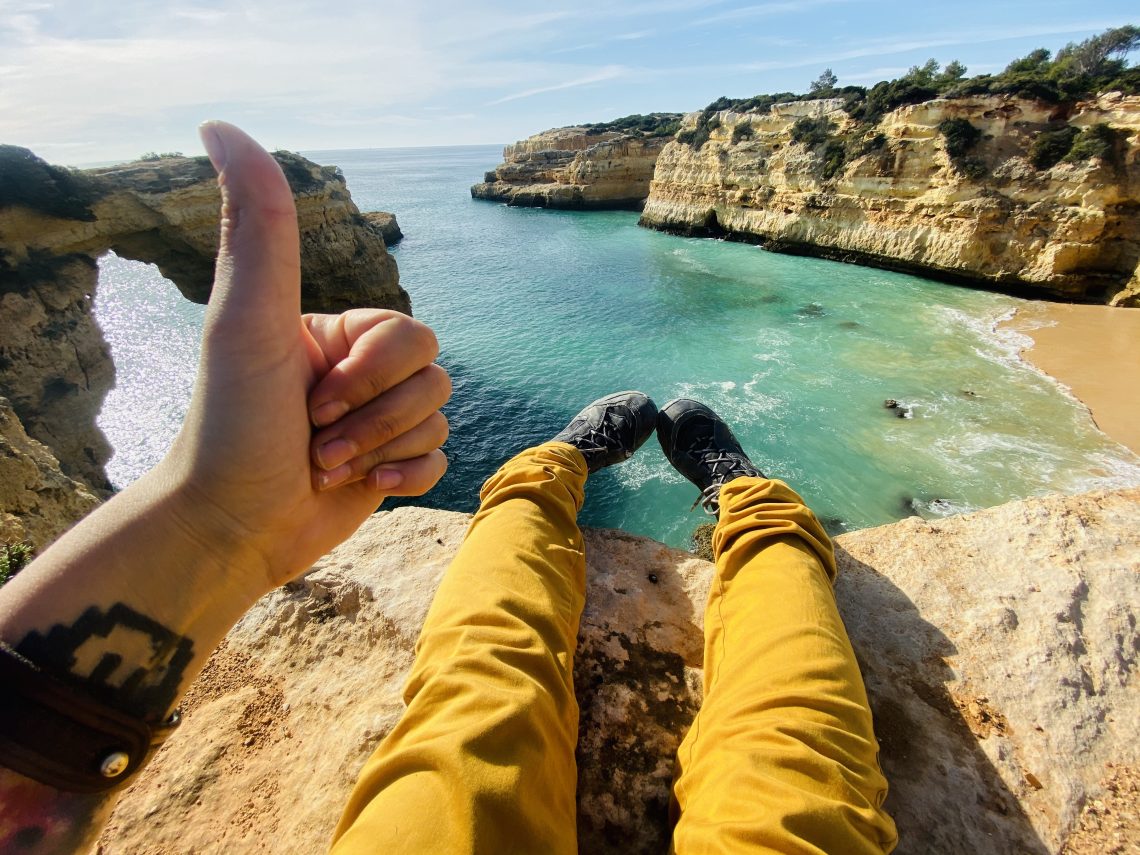
You already know that Algarve is divided into two subregions with the border in Albufeira: to the west, we have a beautiful region called Barlavento (Windward ) with an unofficial capital in Portimão, to the east Sotavento (Leeward) with the capital in Faro. All west from Albufeira (Barlovento) is the “real” Algarve. The photos which pop up in the search engine as soon as you type the word „Algarve” are always from this sub-region. And that's where we are going today!
Barlavento has generally more to offer. Travel agencies love Albuferia and its surroundings, so they usually have a lot of hotels in the vicinity. The coast is no longer marshy and sandy, but full of cliffs and really beautiful. The city itself is a typical touristic resort. If you don't want gypsies to sell you flour saying it's coke or marjoram instead of marijuana, then you shouldn't go there.
Ok, now seriously. This place it's not really our style but maybe just a one day trip wouldn't be that bad. Why? There are various excursions that sail off from the port, including the one to the most-known cave on the entire coast – Benagil (pictures below). What's more, in the city center you will find more than enough:
- gift shops
- bars with a lot of „happy hours” thing going on, which usually means that you can drink twice as much but pay the same during some limited hours during the day for example between 3 and 5 pm.
- discos and clubs with the latest Portuguese hits, but not only - everyone will find something for themselves! They are open almost 24 hours a day, so for fans of clubbing this place may be attractive. It is also the most often chosen by the British, Portuguese city perfect for organizing hen and stag parties
- restaurants (not necessarily with Portuguese food, unfortunately international cuisine predominates with an emphasis on British cuisine and fast food) - I personally recommend only this one - https://goo.gl/maps/Syk7rzcbbgg23CkJ8
If you want to park your van near Albufeira, we recommend Praia dos Arrifes - https://goo.gl/maps/ZZJi3NgFJszq9S5J9 - there is a small, intimate car park and a beautiful beach, perfect for morning yoga sessions
A good starting point could be, for example, Armação de Pêra. To the west from there you will find the most famous beaches and caves of the entire coast - the most worth visiting are:
- Praia da Albandeira (https://goo.gl/maps/ZUgNZR6wWdR2) - great parking also for #vanlife lovers. It is quite small and that's why it can offer a lot of privacy, there is a place to pee and generally not a lot of people - of course off season, at the earliest in October - in summer, forget that you can approach with a car any of the places listed here closet than 3 km.
- Praia da Marinha (https://goo.gl/maps/AXC8E7LNtcB2) - a large parking lot, less intimate for vanlifers but there are a lot of hiking paths in the area that stretch along the coast. You can go without major problems from Praia de Marinha to Praia de Albandeira
- Benagil (https://goo.gl/maps/snwAxSru7YR2)- the most famous place that, in our opinion, is not the best place to park your home on wheels for longer time and because it's so popular it's quite difficult to park there anyway. It's better to see Benagil from the deck of the boat. I once went on a trip, leaving the port of Albufeira. If the sea is not very calm, I rather discourage people with a weak... stomach. During the three-hour cruise we can see the entire beautiful cliff coast of the Algarve from a completely different perspective.
- Algar Seco (https://goo.gl/maps/35643aLALqo) - a great place for an evening walk, the rocks look like pulled out of Star Wars and at sunset they acquire a horribly beautiful deep brown color with shades of red.
The next stop is Lagos - a town that is famous because of the remains of the slave market. The best place to park for all the vanlifers out there is definately around the lighthouse called Ponta da Piedade (https://goo.gl/maps/6bAbbXWccMr). It can be windy tough. When going down from there to the center you will pass some nice beaches - Dona Ana, to Pinhão, dos Estudantes, da Batata and behind the port - Meia. Beaches like beaches - sandy and crowded in the summer but apparently in 1522 that galleons carrying the treasure of Montezuma, the Aztec emperor captured by the soldiers of Herman Cortez, sank just here. What else can we say? Take your diving gear and start your treasure hunt!
Regarding the slave market, unfortunately Portugal has such a shameful episode in its history. The Portuguese transferred 400,000 slaves a year from their colonies in Africa to those in Brazil to cotton plantations through Lagos. The monument itself is completely bland - the external part, which you do not have to pay for, is the place where transactions were carried out, there is absolutely nothing worth attention inside so I wouldn't enter, there is no point. In Lagos there is (one of thousands throughout the country) a monument of beloved by all Portuguese, national hero, Henry the Navigator, the man who made Portugal an empire. There is also a statue of King Sebastian, who ascended the throne as a minor and died very young because he was possessed by the idea of evangelizing infidels in North Africa. It was a long time after all the Moors had already disappeared from the Iberian Peninsula but the young Sebastian was from the Aviz dynasty and he wanted to match his predecessors - Manuel, John I or even Henry, who never became a king but has been more liked and respected than many of those sitting on throne. So Sebastian came up with an idea of organizing a crusade (1578 a crushing defeat in Alcazar - the most tragic battle in the history of Portugal) during which he died without leaving an offspring. His body was never found and his death ended the Great Aviz Dynasty. In addition, Portugal was incorporated into Spain, lost its independence for 60 years and lost half of its national treasury. Just because a youngster on the throne did not listen to his older colleagues and had a whim to invade the infidels in Morocco. So in Lagos you have a monument that perfectly captures the young age of Sebastian.
I only associate Portimao with a Mercedes Benz dealer, altough it was JJ who was trying to negotiate there about our broken car and he was there alone, I've never visited this city, so there is nothing I can say and JJ either. Let's continue west to get to the town of Sagres, where there is... nothing. Maybe the name makes you think of Portuguese beer but it is not produced there, and if you want to drink it in a local bar you will pay a fortune. There is Fortaleza de Sagres, in which a strange circle was found in the XX. It is suspected that it is a wind rose or sundial but it is not known whether it already existed in the time of Henry. Where did it come from there? Sagres is famous because of Henry the Navegator, apparently that's where he founded the world's first maritime academy. However, there is no evidence for this, in the fortress itself there is no indication that there had ever been an institution that was supposed to bring together Europe's strongest minds in the field of sailing, for example cartographers. The caravel project was supposedly developed by this institution and it allowed the Portuguese to conquer almost the entire world. Scientists are still arguing whether it had even existed in this place. Inside the fortress, only the Church of Our Lady of Graces has survived, housed in the place of the chapel built by Henry the Navegator. To sum up - there is nothing interesting there so it is better to go further to Cape St. Vincent and skip Sagres.
What about Cape St. Vincent? Saint Vincent is the official patron of Lisbon, but every resident of the capital will tell you that the patron is Saint Anthony. Why? Because Saint Vincent was from Saragossa and we know that the Portuguese with the Spanish don't like each other so much so how come a Spaniard is the patron of the capital of Portugal? !!?! Who was Saint Vincent? A martyr who, of course, died for his faith. His body was thrown into the water but protected by crows reached the very end of Europe and was thrown ashore in the place that today bears his name. Initially there was a tombstone, also protected by ravens, but the first king of Portugal, Alfonso Henriques, fearing the Moors, moved the exhumed corpse to Lisbon. He is not only the patron of Lisbon but also of farmers, woodcutters, winemakers, wine sellers, foresters and a Polish city called Przemyśl
Cape is really impressive for many reasons - there is a lighthouse that has the largest range in Europe - over 100km. Only one lighthouse keeper supports it. The place was called by the Romans |”the Holy Cape|” because it was the last place from which you could see the sunset. Sailors call it „the cape of warm trousers” because of the warm and cold currents that meet there. The wind blows there like a bastard, but if you are lucky enough to get there on a nice, cloudless day, the sunset should give you goosebumps. We've been there three times and always the wind has been strong as hell. The first time was probably the most memorable because it was practically impossible to get out of the car (due to the wind), so we just had a quarter of honey liqueur in the car. At Cape St. Vincent that you can eat the last sausage before of America (this is the name of the bar serving dubious quality hot dogs and hamburgers, fourth photo below, and if you do not believe that this is the authentic name have a look here - https://goo.gl/maps/PFBqP5WNGB3Xu6jW8)
Moving away from the coast we get to Silves, which resisted the most during the Reconquista. It was first conquered in 1189 after the siege that lasted all summer by Sancho I, the second king of Portugal. Unfortunately, in 1191 it fell back into the hands of the Moors but in 1242 it became part of the Kingdom of Portugal. At the entrance to the Moorish castle of Castelo dos Mouros there is a monument of Sancho I. Admission costs a penny and there is generally nothing interesting inside. We can walk around the walls but the views are not really breathtaking. When I was there the castle hosted an interesting exhibition on restoring Iberian lynx in Portugal. I do not know if it is a temporary exhibition but you could see „live” small lynxes recorded at the Portuguese Iberian lynx reproduction center located in Silves. However, if you decide not to go inside, you can always sit in a nearby bar and try a beer with the graceful name "UWAGA" (a Polish word for „ATTENTION”)

The mountainous part of Algarve is located on its northern border, from the side of Alentejo. Serra de Monchique is a volcanic mountain range, fertile soil causes that it is very green but I wouldn't call it mountains, rather hills because the highest is not even 1000m high. This is where cork oaks and olive trees grow, although there are many, many more in the neighboring region - Alentejo. Almonds, figs or oranges and also the medronho tree, a traditional fruit brandy obtained from the fruit of that tree kicks better than LSD. Eucalyptus also grows here but it grows everywhere around Portugal. It was imported for the purpose of making paper but it turned out to be … an ordinary weed.
The entire series of articles about Algarve:
Cork – the (natural) national treasure of Portugal
